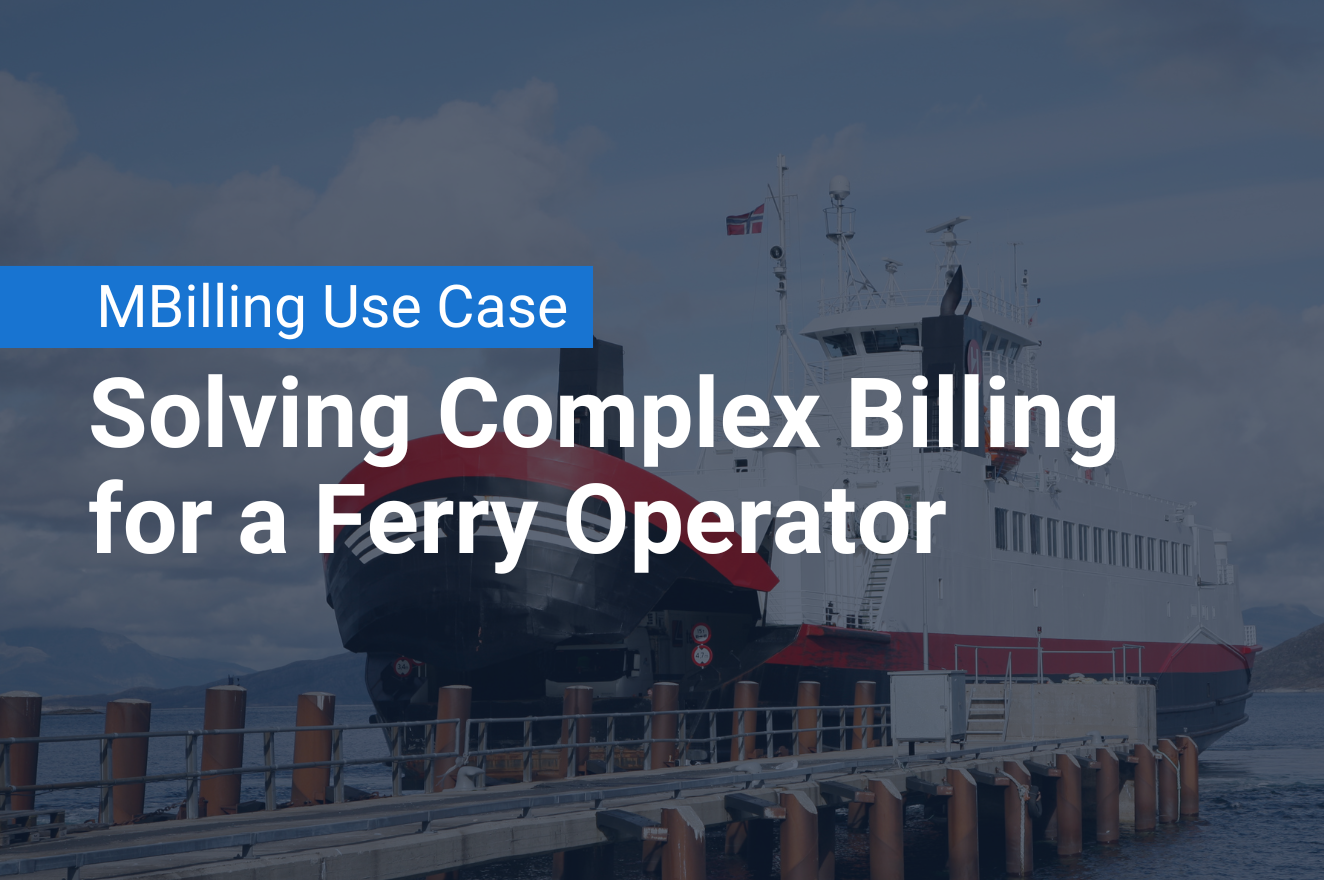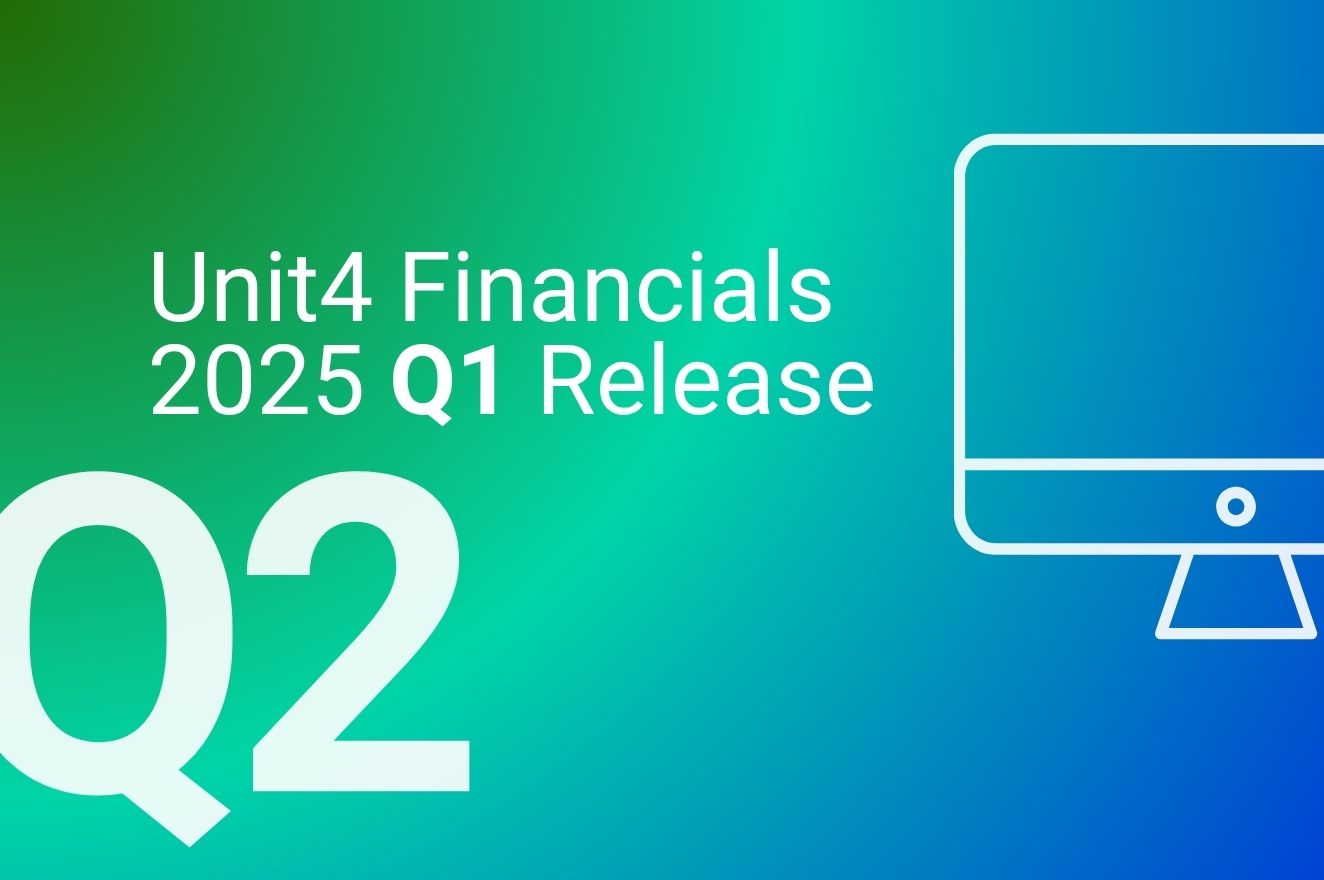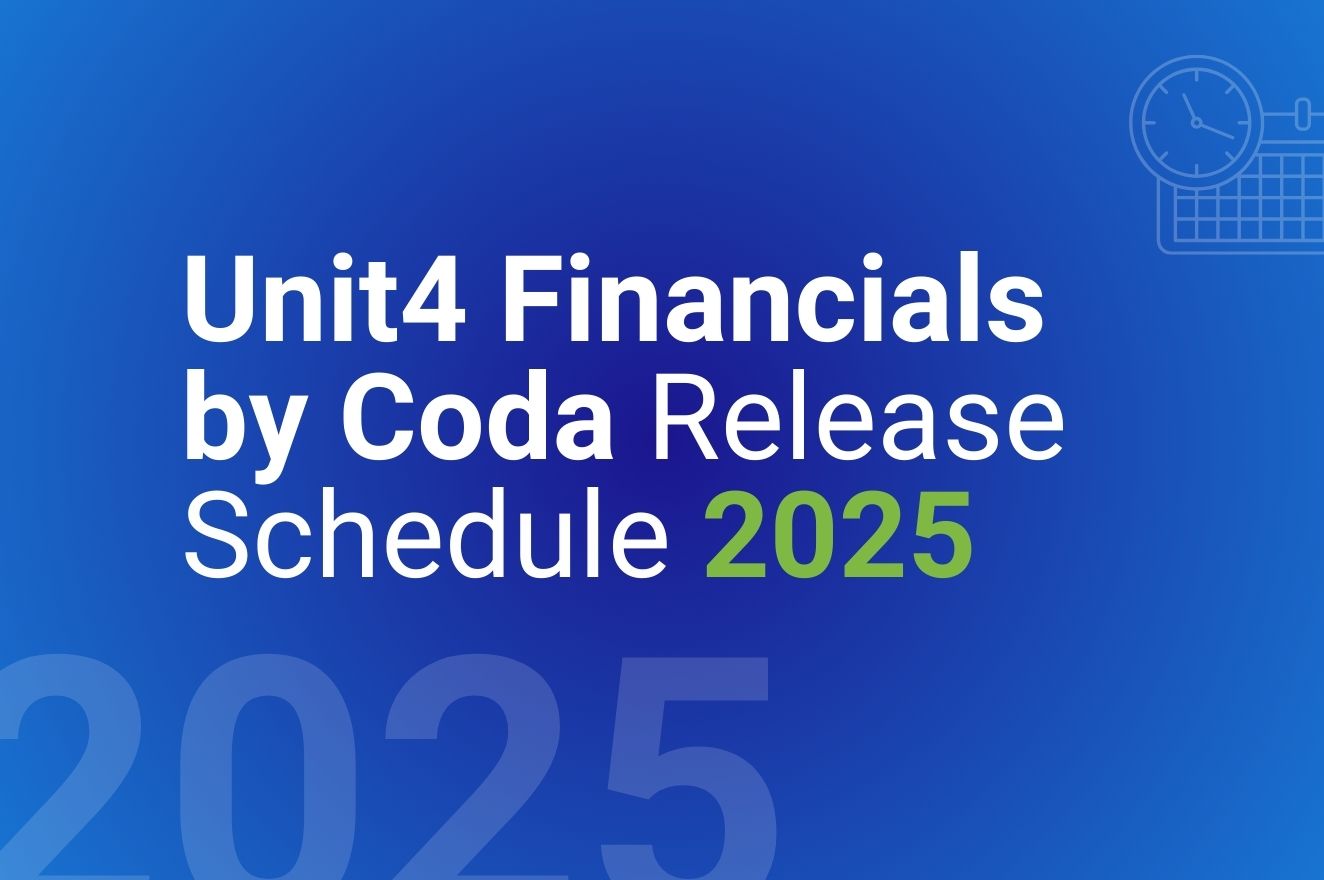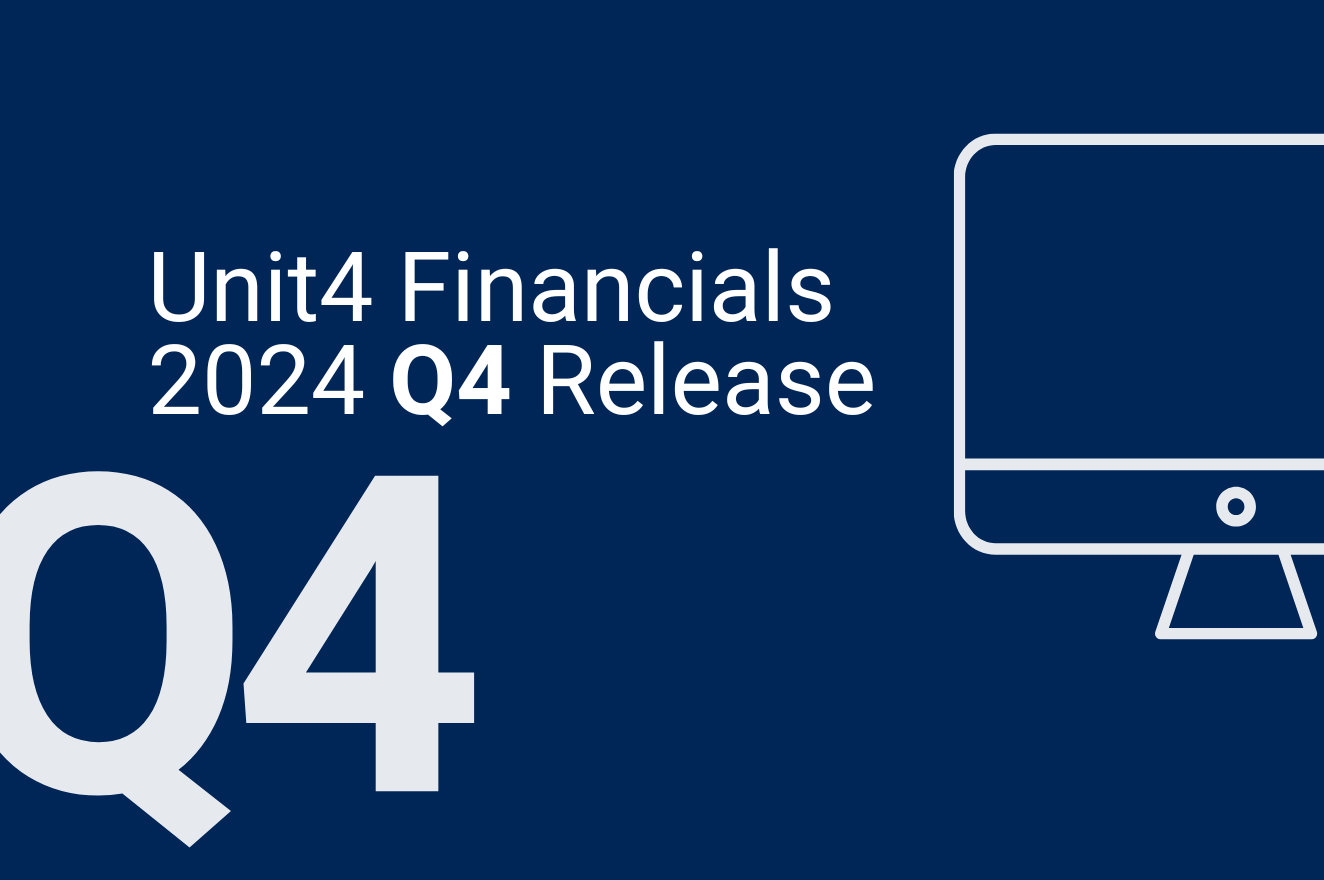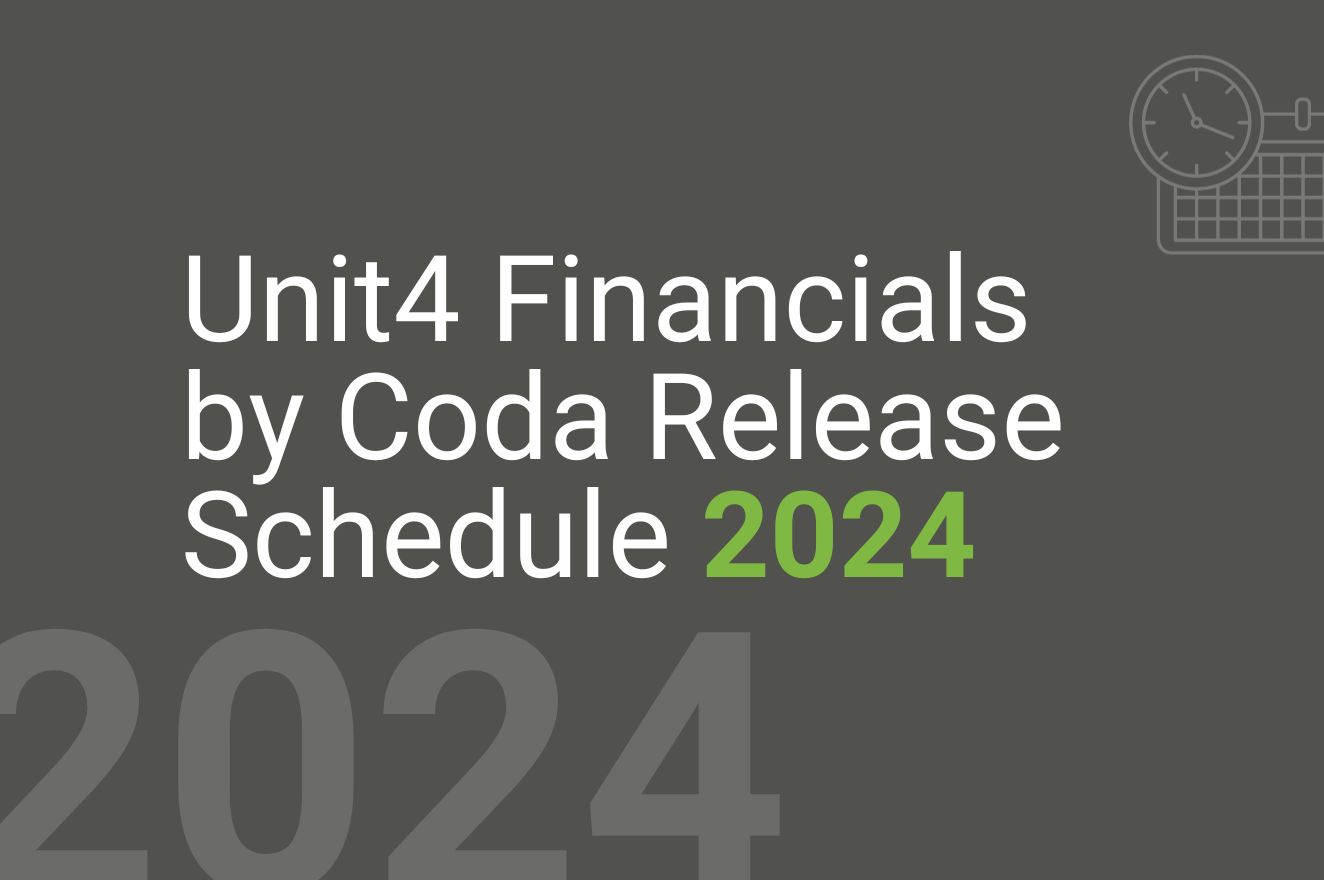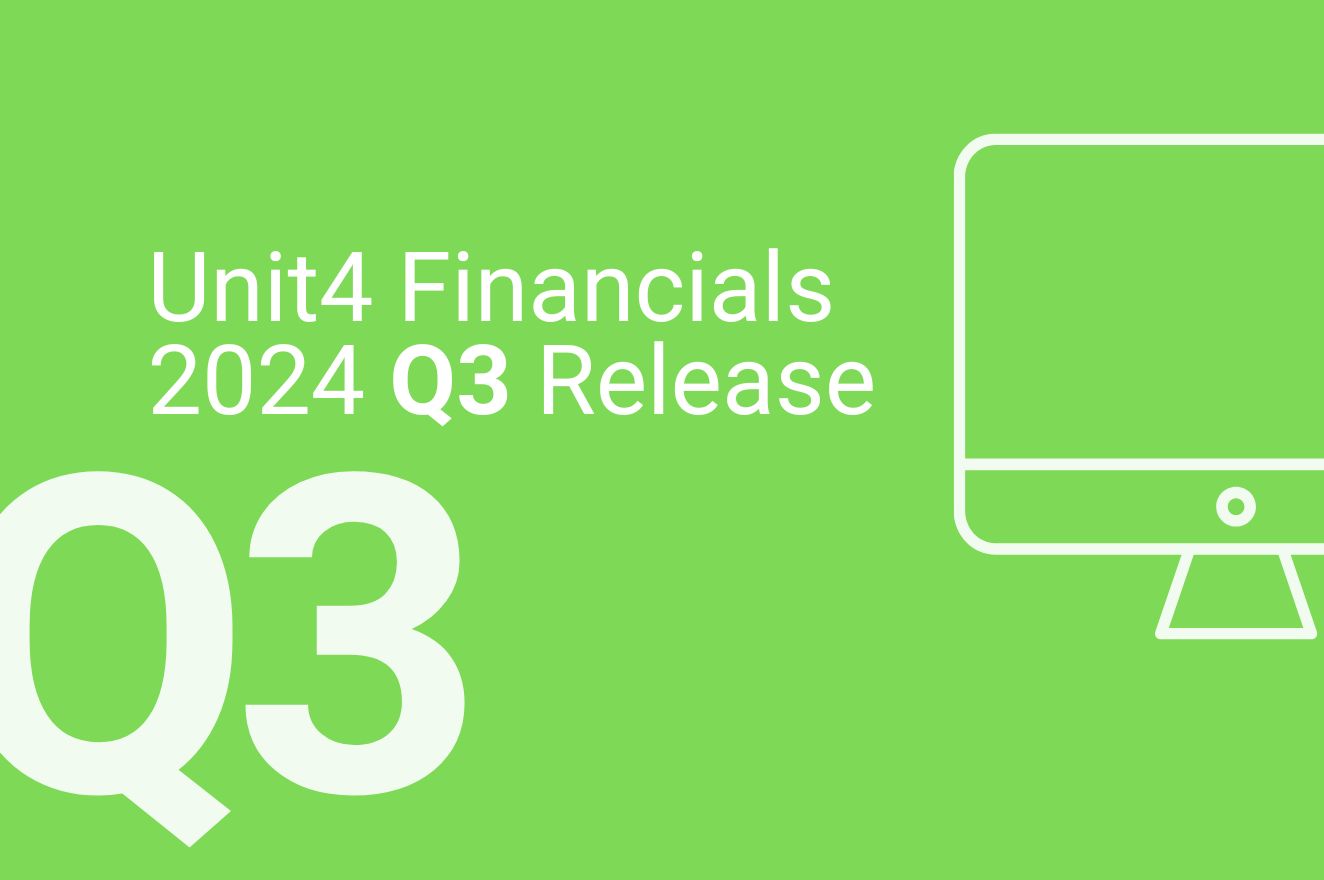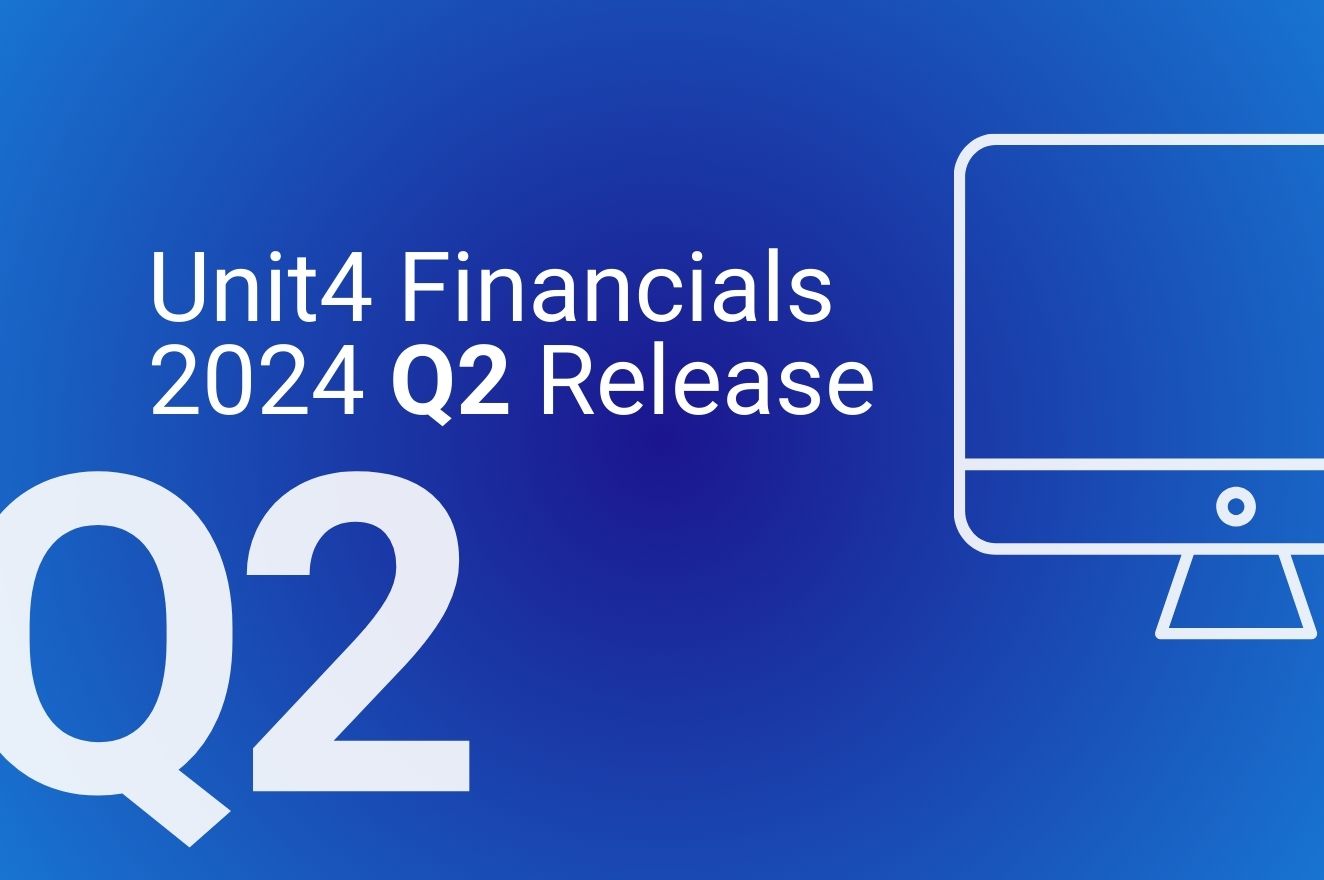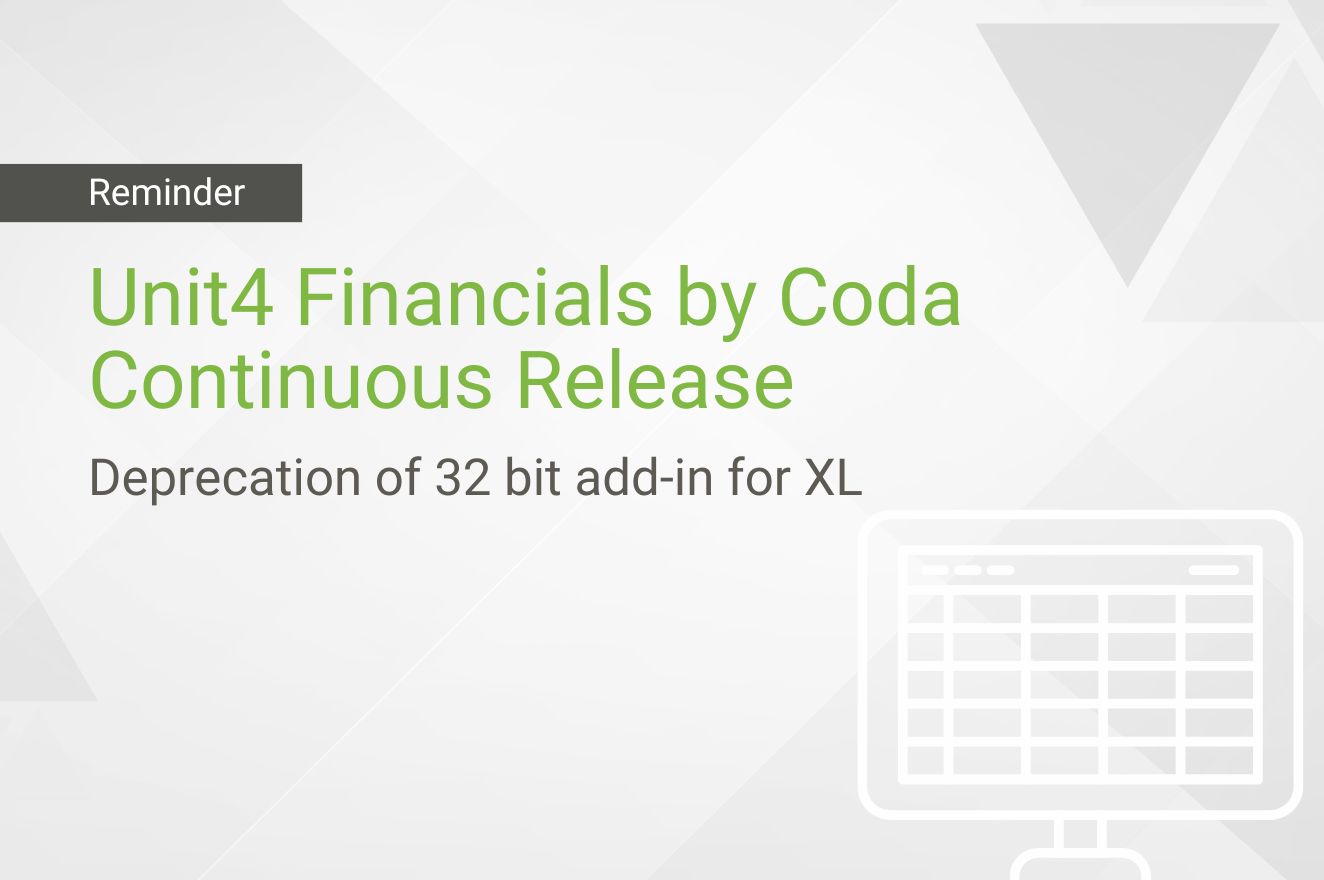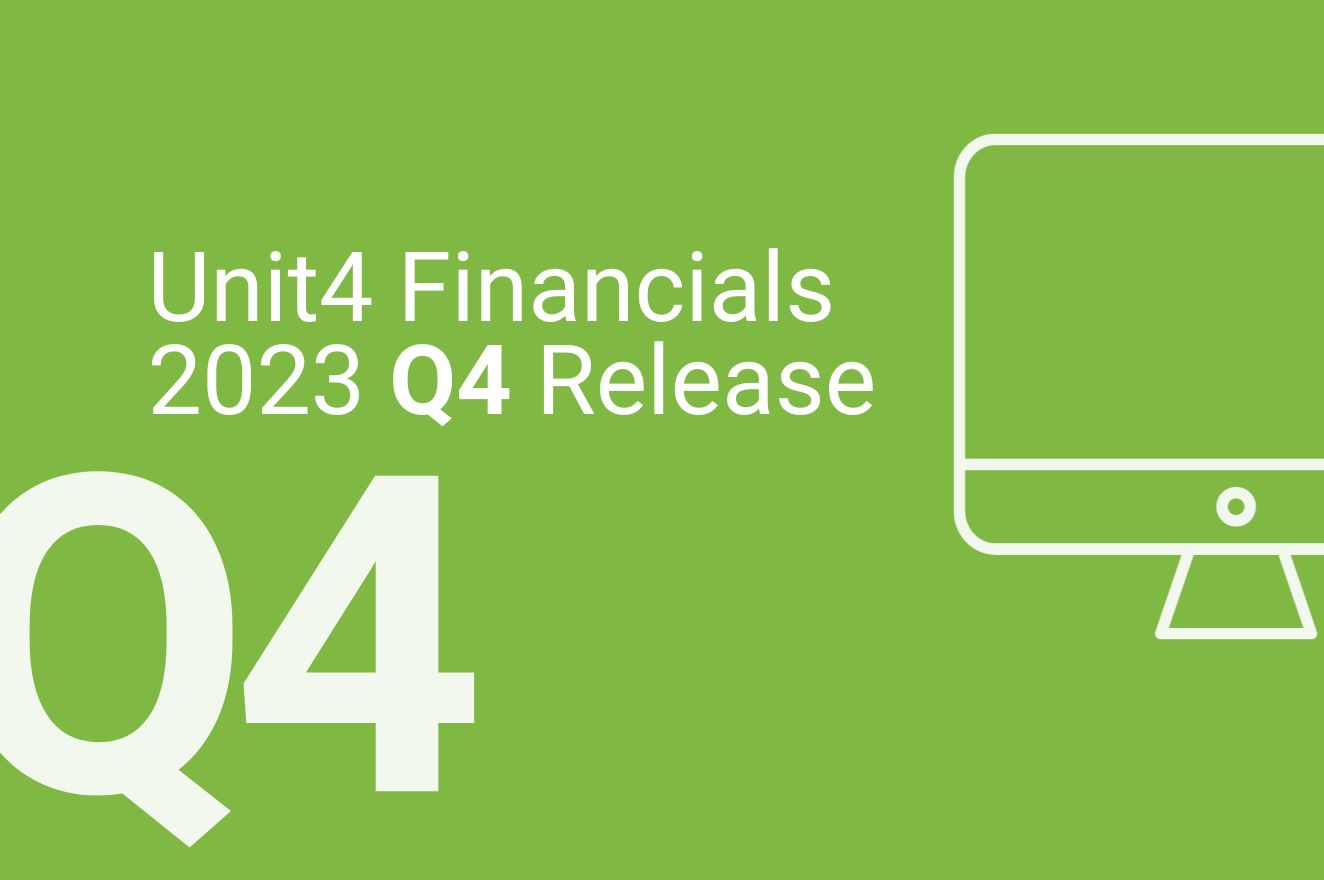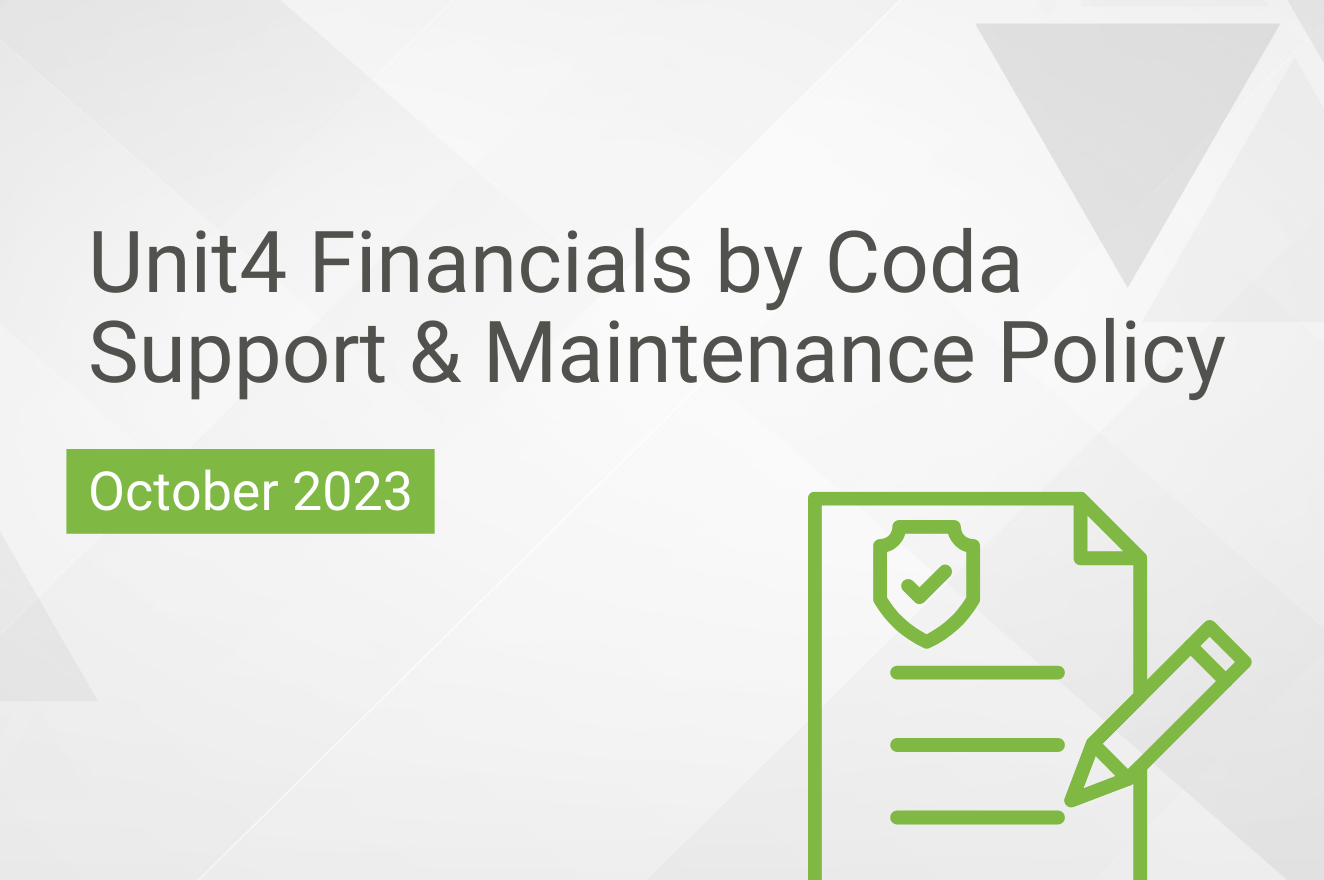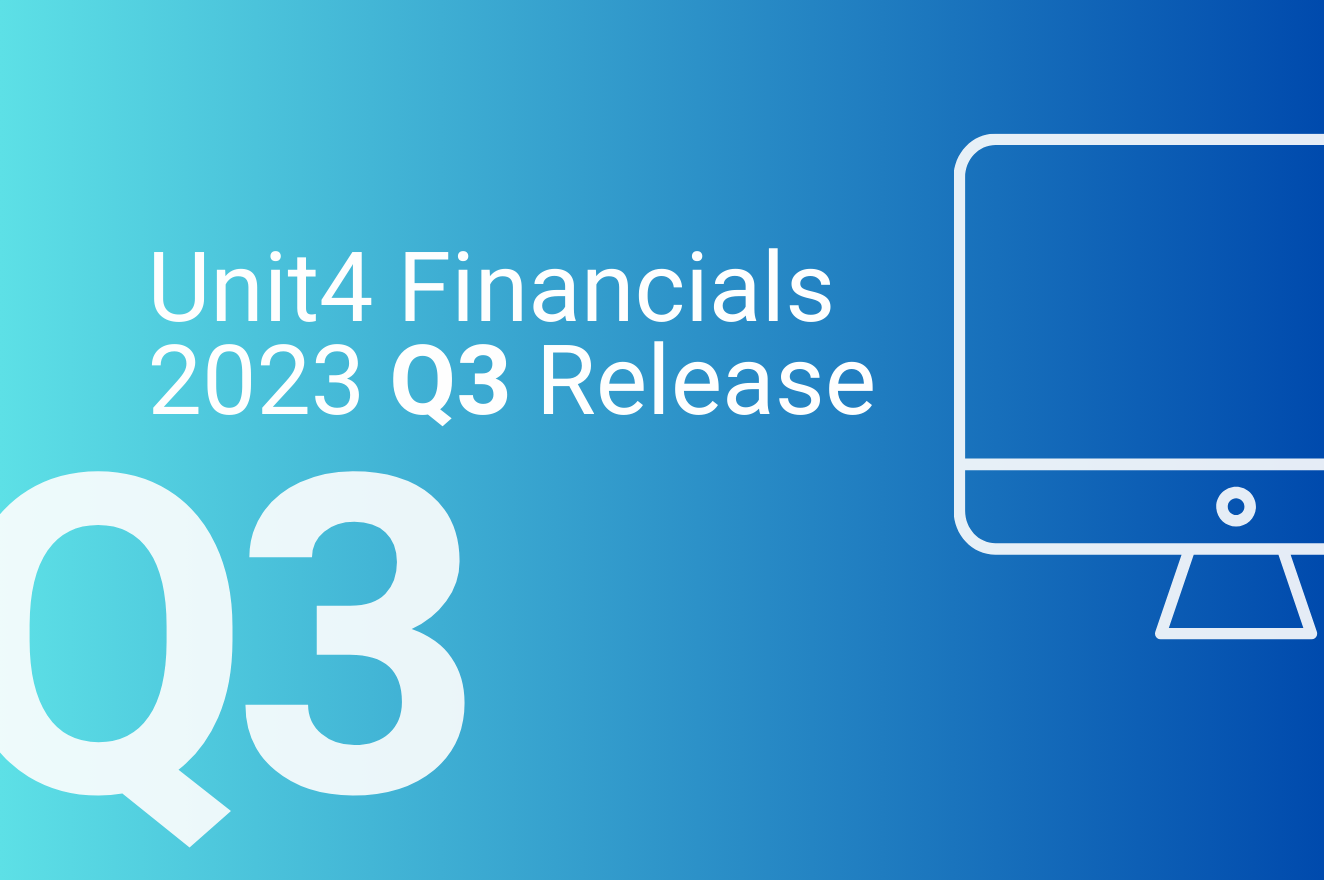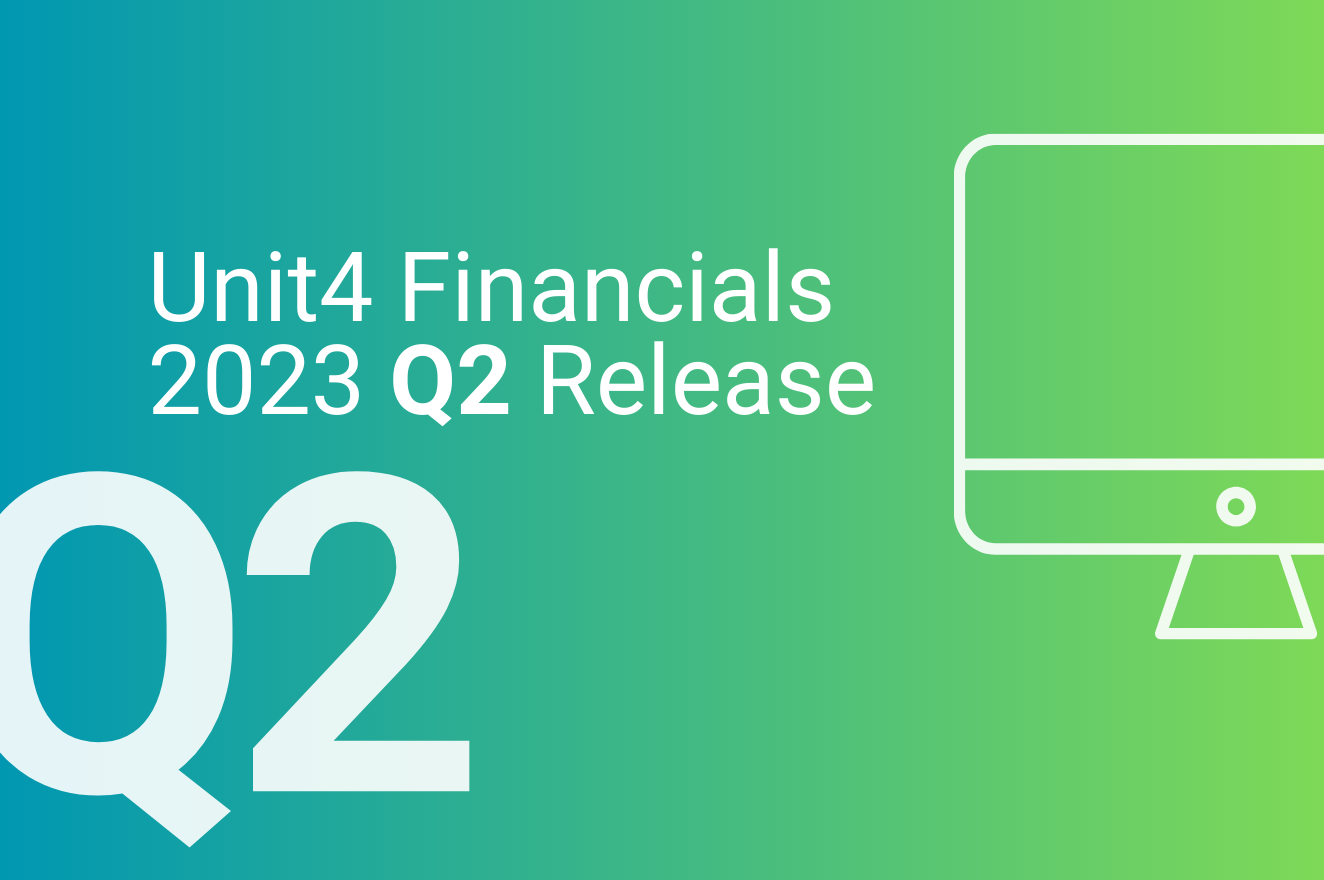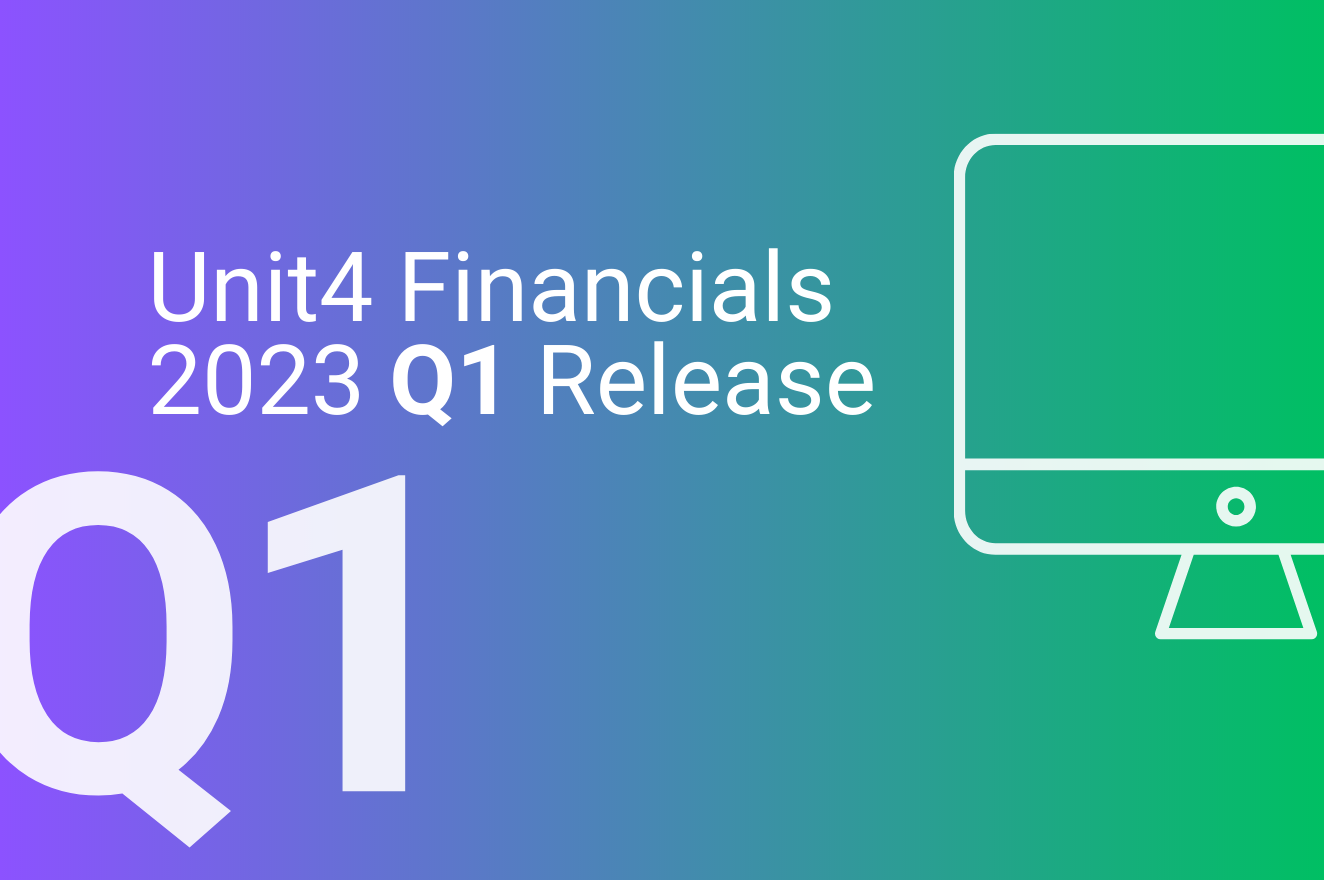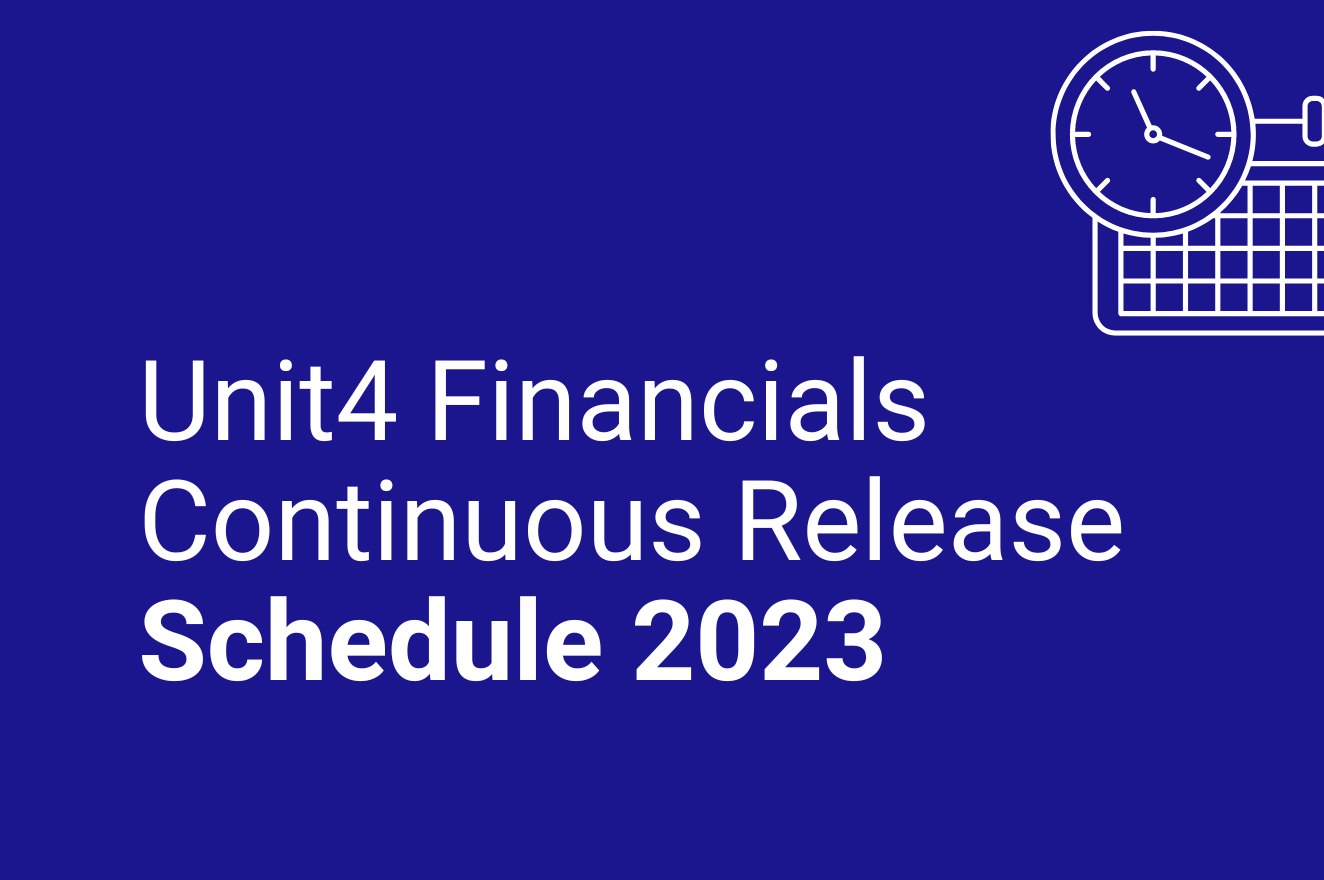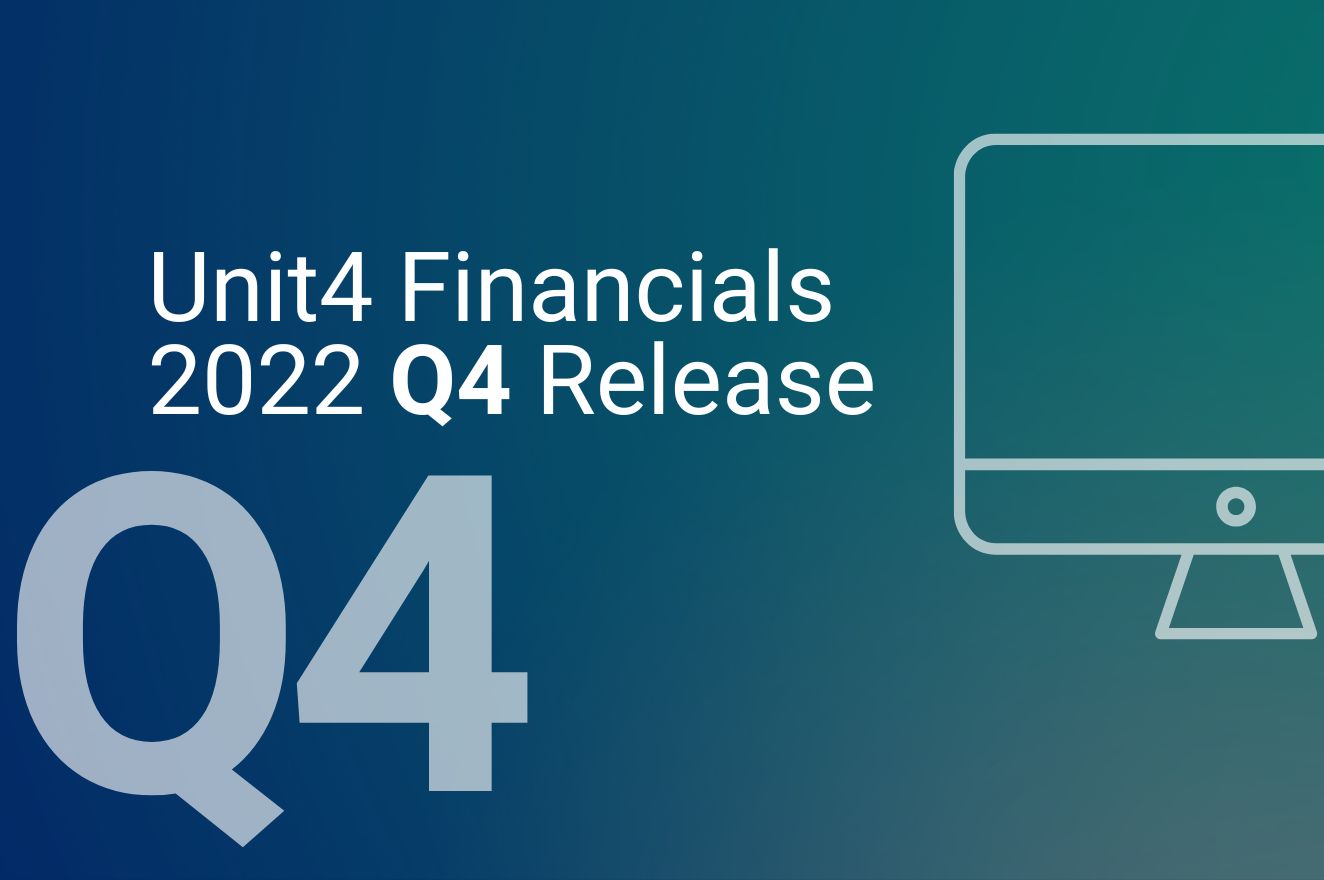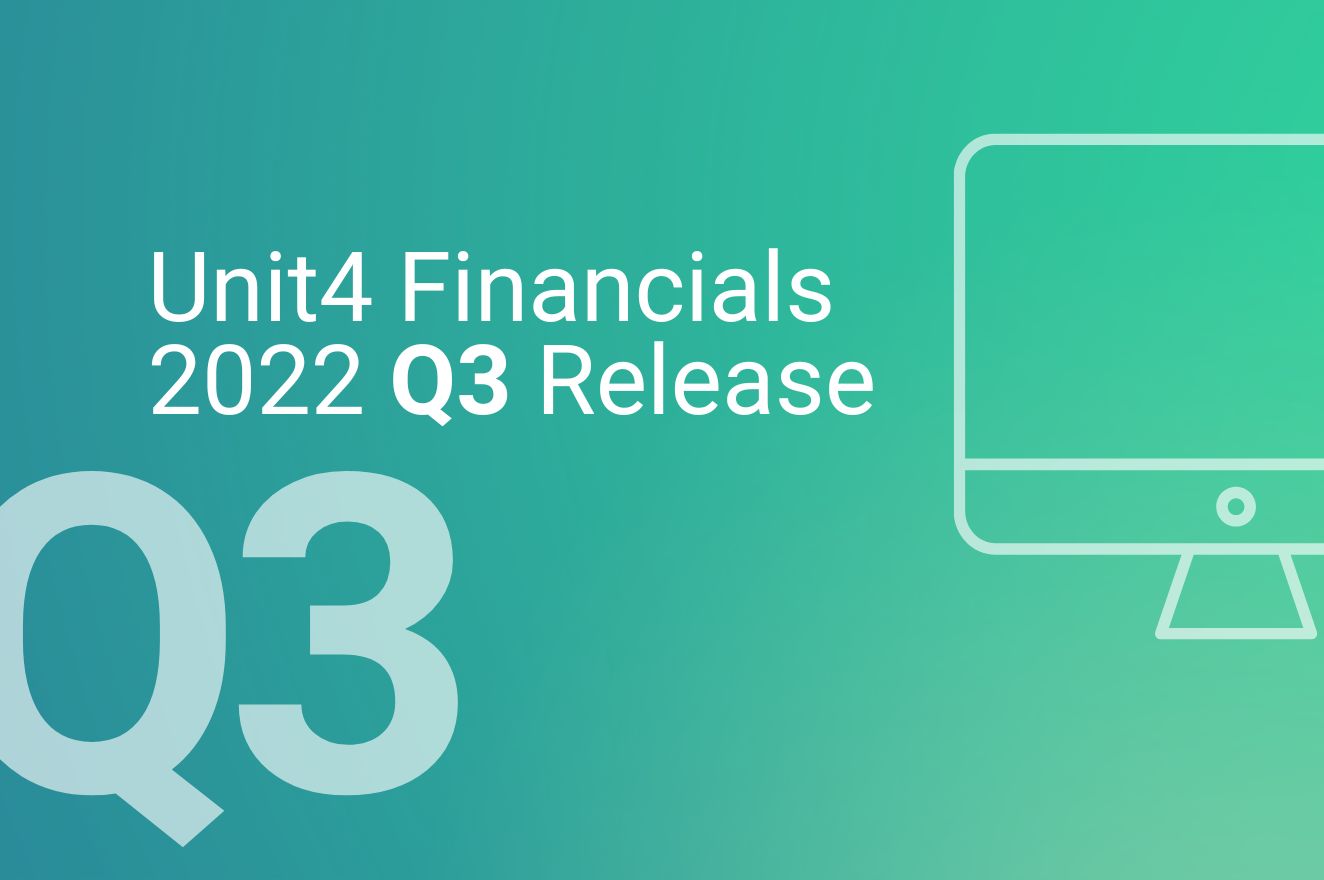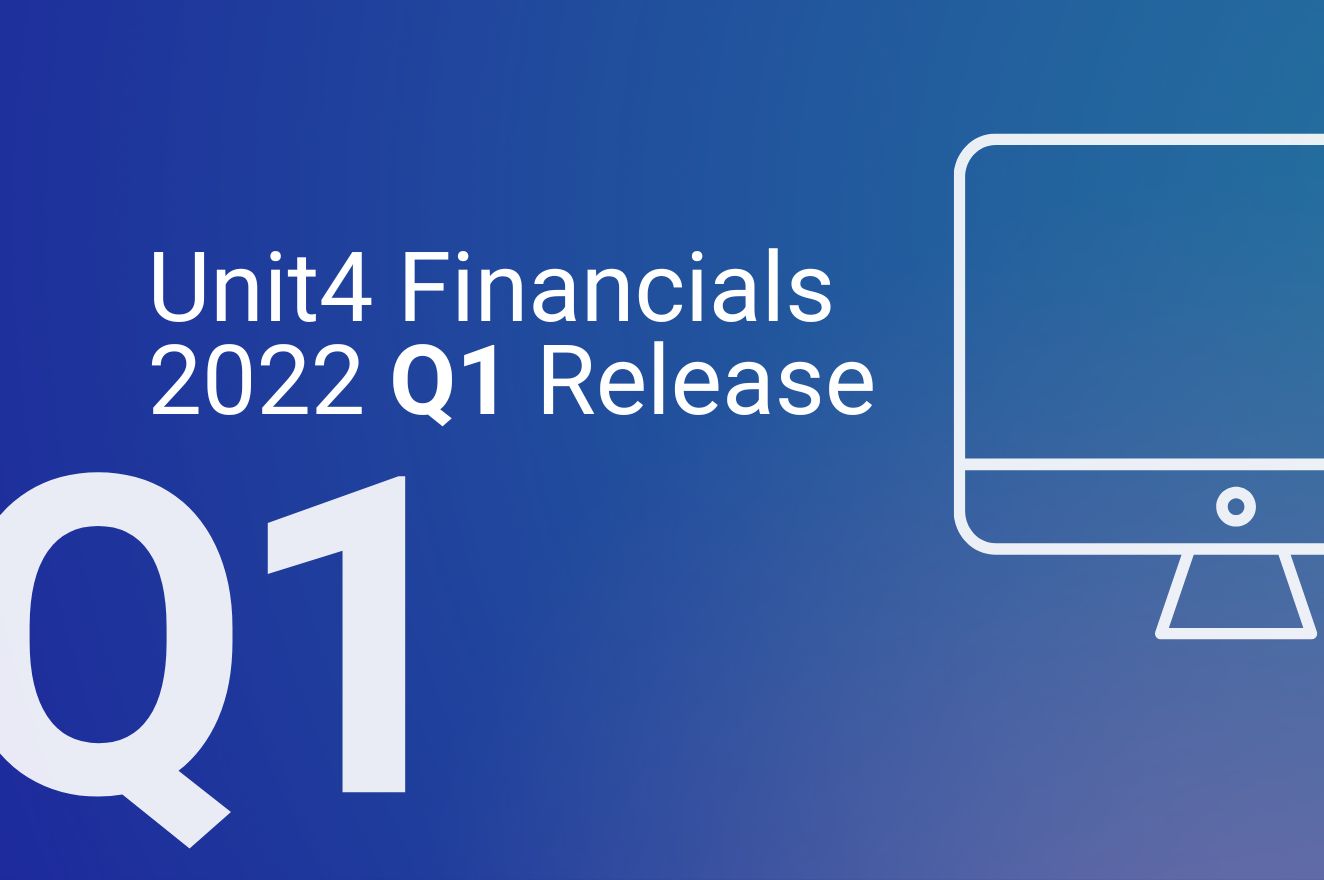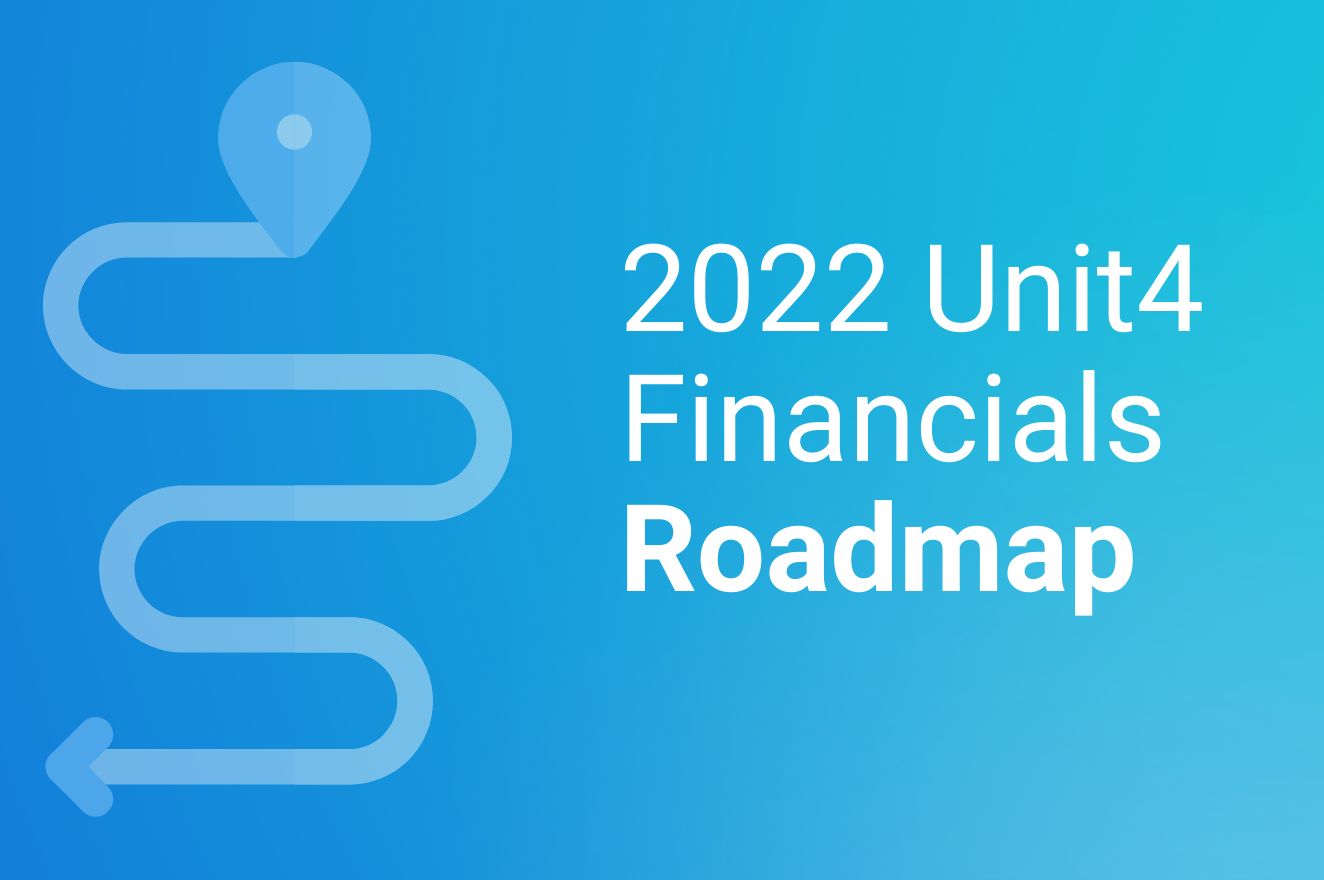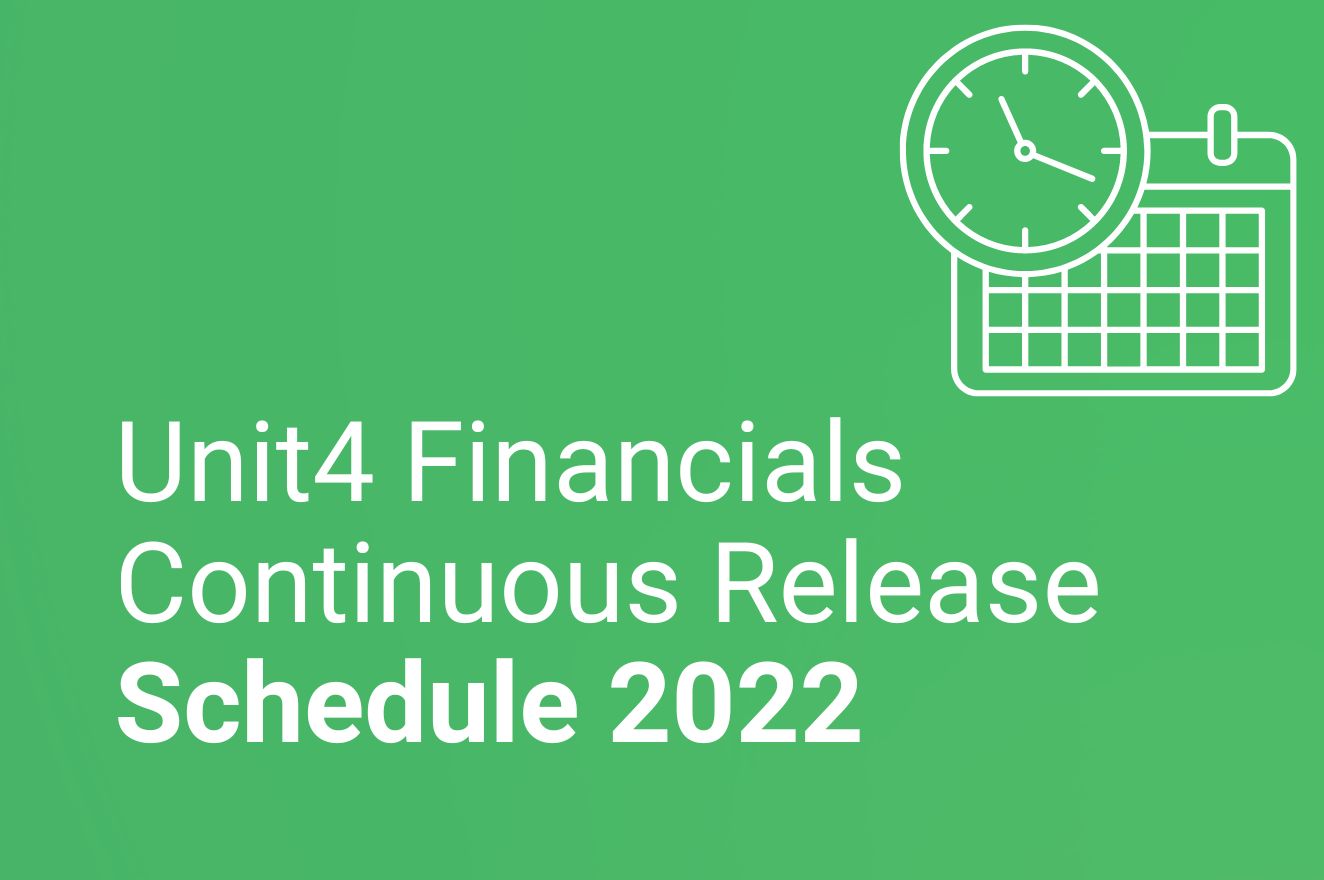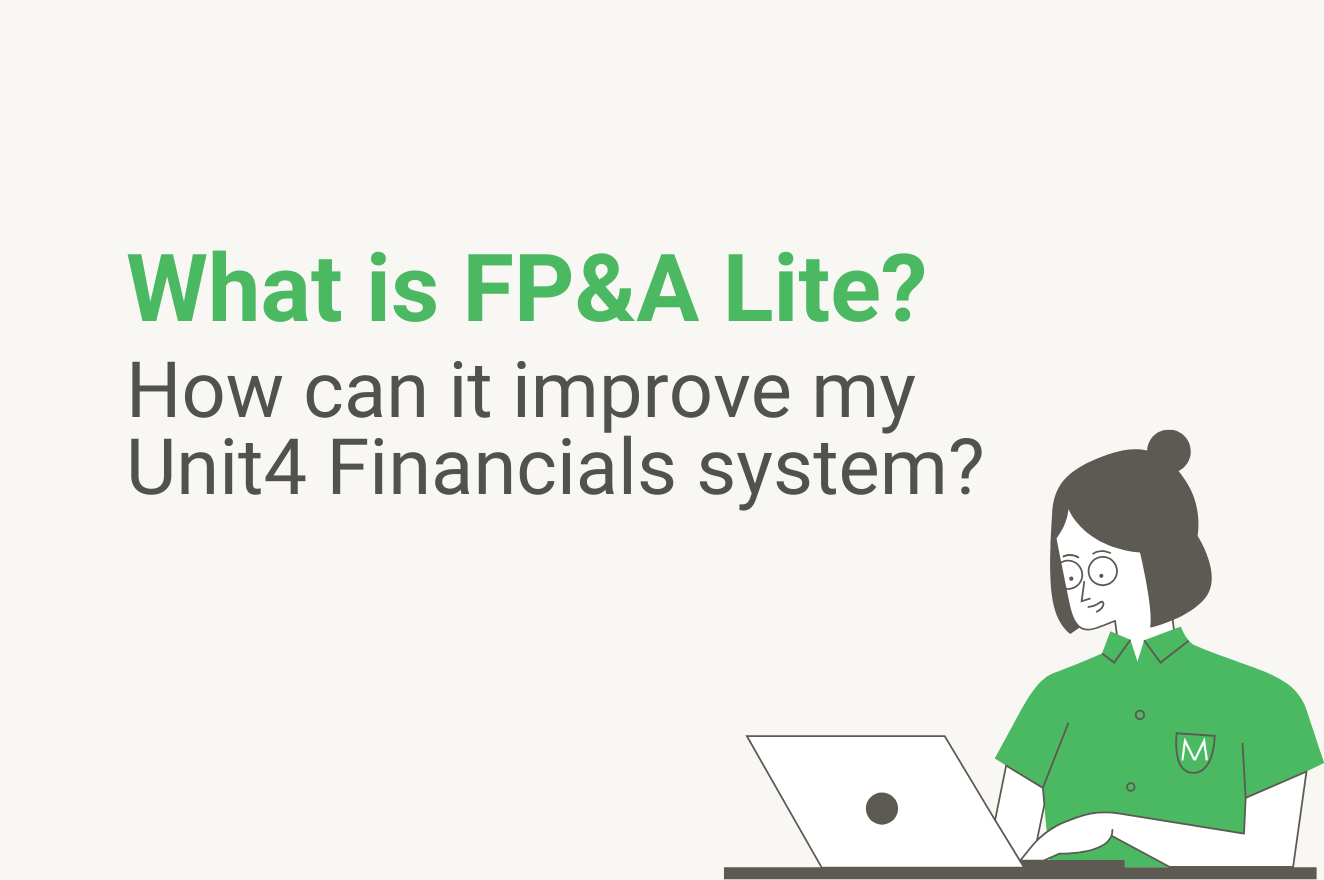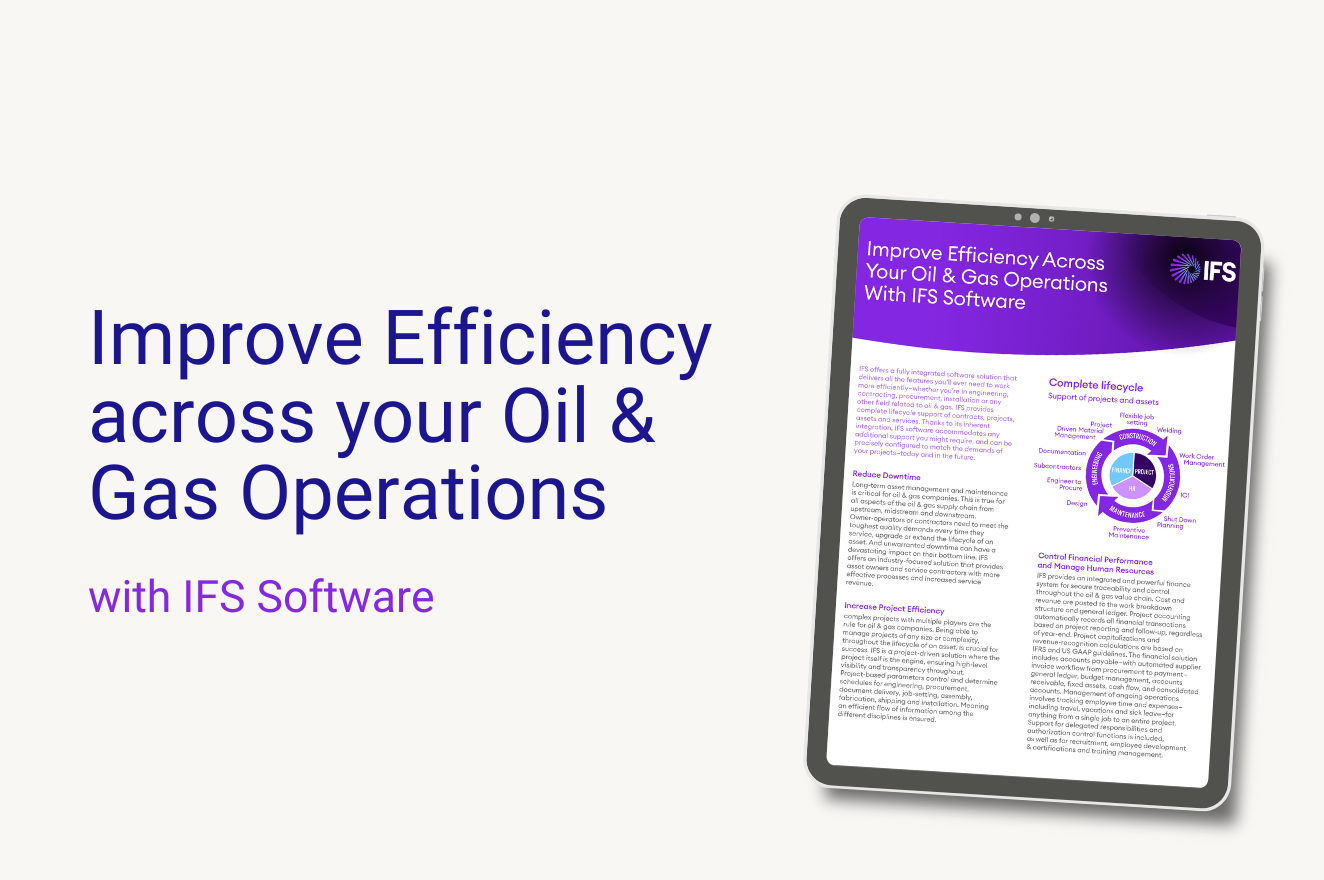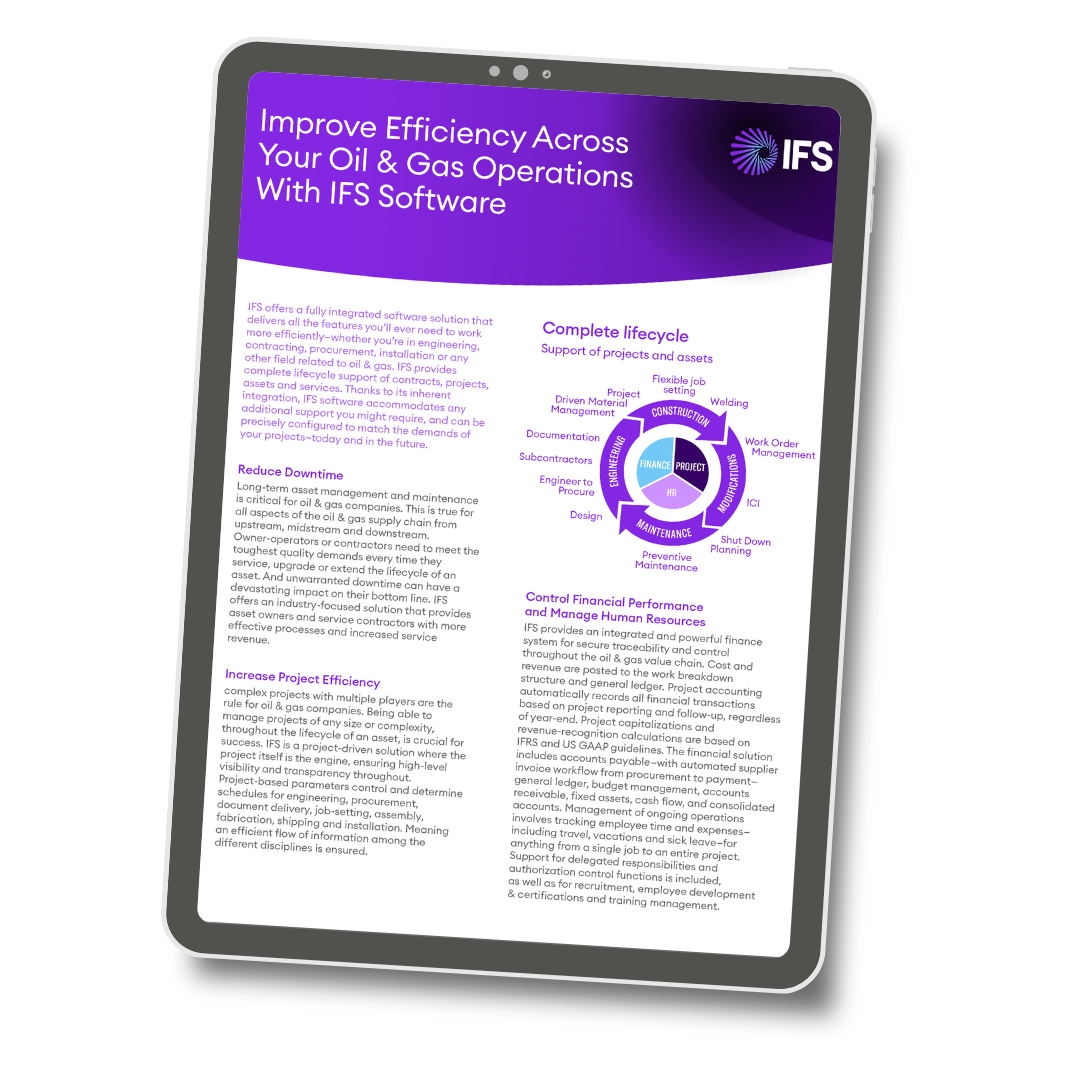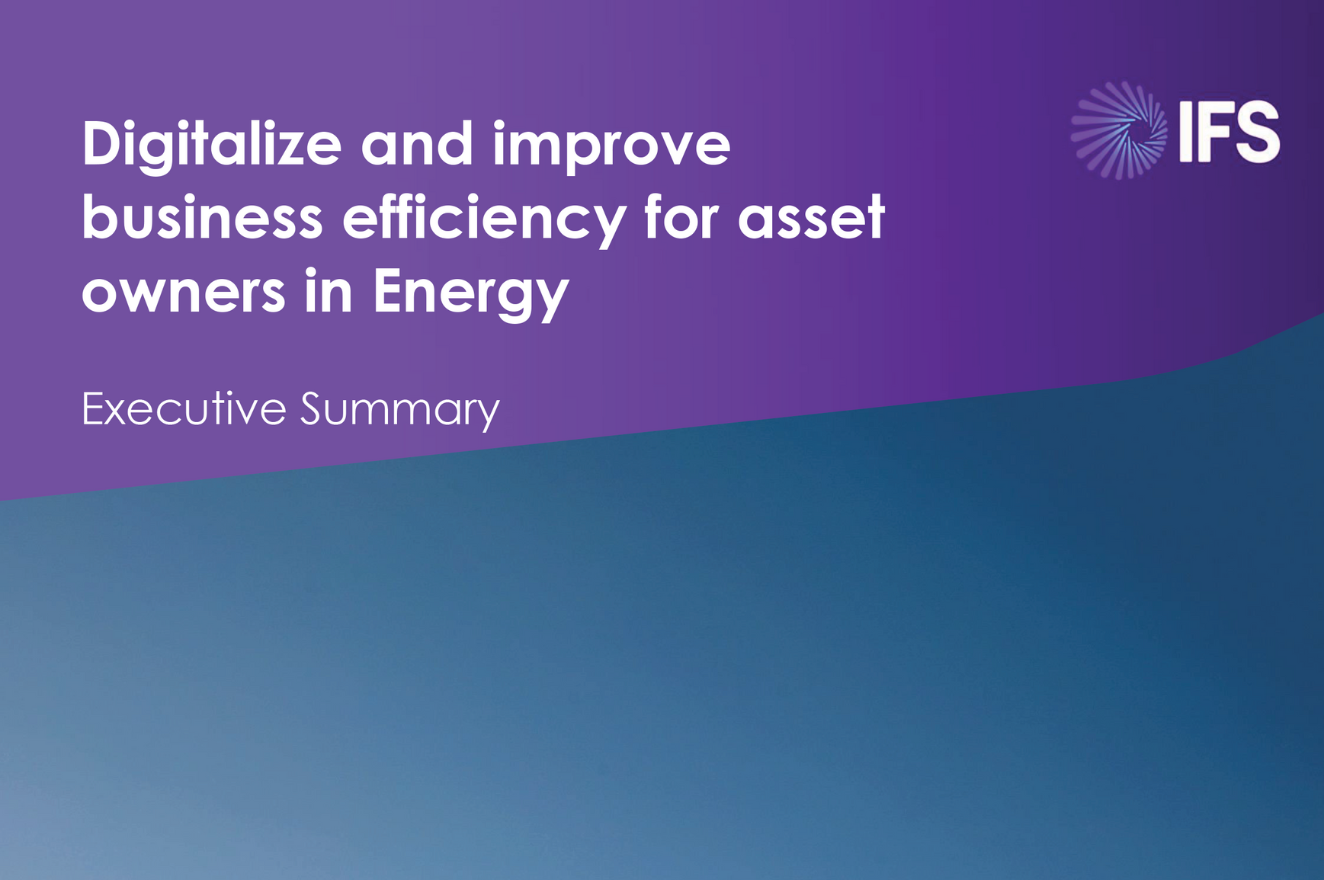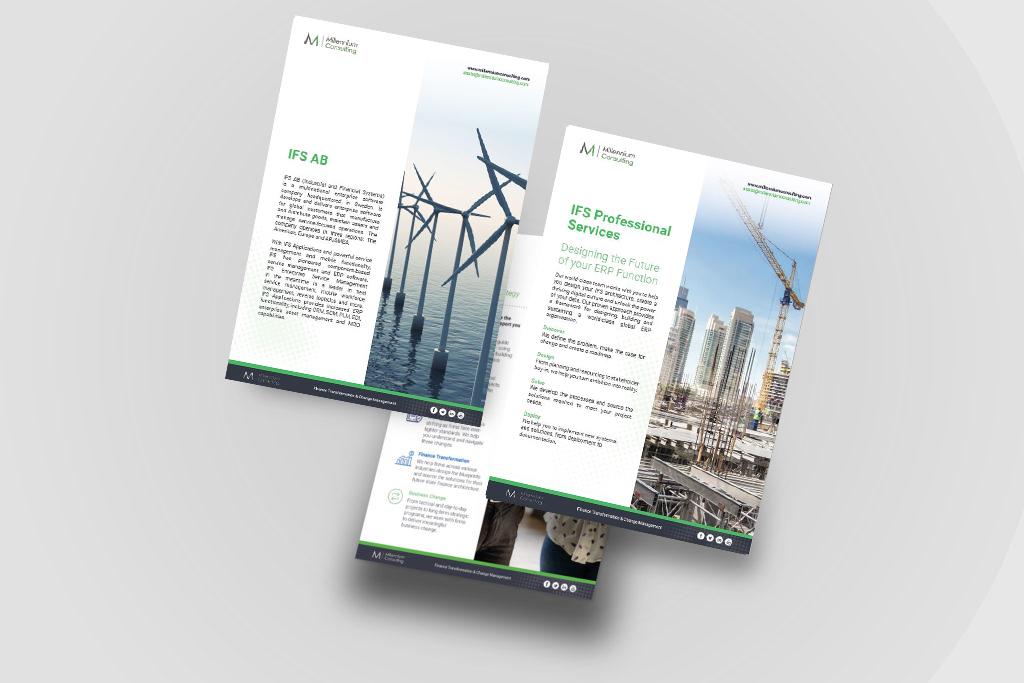MBilling Use Case: Solving Complex Billing for a Ferry Operator
August 2023
MBilling Use Case:
Solving Complex Billingfor a Ferry Operator
In terms of the sheer range of customer categories, billing methods, transaction volume and parameters to account for, billing doesn’t get much more complex than in the case of ferry operators.
Here’s a closer look at how MBilling from Millennium Consulting meets the needs of this highly demanding sector.
What is MBilling?
MBilling is Millennium Consulting’s sales invoicing solution designed for users of Unit4 Financials by Coda.
The solution is underpinned by technology from order-to-cash specialists, ICORP, and is designed to automate and streamline processes of organisations with complex billing requirements.
For an introduction to its capabilities, take a look at our guide, Complex Billing Challenges Solved: Introducing MBilling for Unit4 Financials by Coda.
Ferry Operator Use Case
The Challenge
For operators within this industry, complexity in terms of billing and, invoice management & processing arises in multiple areas:
- Customer categories – e.g. private passengers, different vehicle types, accompanied and unaccompanied freight. Service offerings for different customer groups will involve a wide range of pricing options, payment terms and invoicing procedures.
- Tiered pricing. Examples include volume-based pricing arrangements for frequent commercial users – or group discounts for private passengers. Some of these may be standard arrangements. Others may need to be negotiated on a case-by-case basis. All will need to be accounted for accurately in the relevant invoices.
- Add-ons. Parameters to be factored into invoices may include cargo handling for unaccompanied loads, short or long-term ambient or refrigerated storage, and in-crossing cabin/catering packages for drivers.
- Partnerships. With the type of add-ons listed above, elements of the service offering may be delivered by third parties. Accuracy of recording is essential for the purposes of recoupment and internal reporting.
- Multiple touchpoints. When an initial arrangement needs to be varied for private passengers and commercial customers, terms of passage may be determined by a combination of touchpoints (e.g., a passenger books via your website and then telephones to secure an add-on or discount). When bills are generated, such variations need to be recorded in an accurate and consistent manner. Siloes existing between those touchpoints may impede this.
- Cross-border and regulatory considerations. For each crossing booking, the application of levies, duties and taxes, the language used, and the layout and content of the bill may be determined by passenger type, onward-passage intentions, freight load category and volume. An incorrectly entered data point may lead to needless delays / additional outlay for the passenger – and reputational damage for the carrier.
The Solution - MBilling
Our billing solution is flexible enough to be tailored specifically to your preferred pricing and billing model. What’s more, it is powerful enough to streamline and automate that model – even in the case of multiple billing parameters and high volumes of transactions.
Thanks to this combination of flexibility and powerful processing capabilities, MBilling is already being put to work by a ferry operator to address the types of challenges detailed above.
With MBilling, you set the rules, and our solution ensures they are followed – while eliminating the time-consuming workflows and risk of data-entry errors that arise with traditional billing processes.
MBilling automatically identifies and lifts all relevant billing data and applies it to your system. It calculates the pricing considering all relevant variables underpinned by the rules set by you – and taking into account any exceptions or validation steps you need to apply. The same system generates and distributes those invoices according to your preferences. And when a bill is issued, the transaction is fed through immediately to your Unit4 Financials by Coda system.
Accurate, consistent, and easy to deploy, MBilling ensures invoicing processes support business growth – rather than being a barrier to it.
Find out more
To discover more about MBilling and how to integrate it into Unit4 Financials, speak to us today.
Discover the latest Unit4 Financials releases
The Evolution of Unit4 Financials by Coda
The Evolution of Unit4 Financials by Coda
Guest post from Dave Anstey, Engineering Director, Unit4
– August 2023

What’s the difference between run-of-the-mill and best-in-class when it comes to accounting and financial management packages?
There’s no single magic ingredient that makes a good solution great. Of course, it’s essential to get the fundamentals right – e.g., solid core accounting capabilities and a ledger that’s always in balance, a user-friendly experience, and easy integration with the rest of your tech stack. And in an ideal world, your solution should deliver visibility and control across your company’s people, processes, and systems.
However, if you really want to understand what makes Unit4 Financials by Coda stand out as a great solution, it’s worth taking a brief look at how it has evolved. Architecturally and technologically, it has been completely transformed over 20-plus years. But none of this is about extraneous gizmos or change for change’s sake. Rather, it’s about ensuring that finance departments are equipped to handle their most pressing operational challenges; whether they be new regulations, doing business in new markets and volatile conditions – or responding to internal pressures to do more with less.
Here’s a closer look at how Unit4 Financials by Coda has evolved to meet customer needs – and at what the future holds…
20+ years ago
At this time, Unit4 was releasing software versions for Coda (as it was then known) and its other enterprise offerings approximately every three years, with maintenance releases approximately every six months.
Responsiveness to customer needs was always a key part of the company’s ethos. As such, Unit4 was heavily invested in responding to what were known as SARs (special ad-hoc requests): a huge but important undertaking for the company’s maintenance and engineering teams.
As was the norm for enterprise software at the time, installation of Coda was a manual and heavily time-consuming process: a vast difference compared to today.
15 years ago
How can we get new and potentially highly useful functionality into the hands of our customers faster? This was the perennial problem faced by enterprise software providers at the time, and Unit4 was one of the companies committed to optimising roll-out schedules.
The introduction of service packs facilitated quicker routes for delivery (far more efficient and less invasive than new version releases). Inroads were also made into a quicker and easier installation.
10 years ago
At about this time, Unit4 switched to EAR files (Enterprise Archive files) as a deployment methodology for the software. Starting with the web tier, and then the application tier, the use of EARs meant deployment could be achieved much more rapidly.
This led to a reappraisal of the company’s software architecture (Why have we got separate tiers for both our software and servers – and how can this be rationalised?”)
The result was a new, single-tier structure, with the deployment of the software being the same whether it’s on-premises or cloud. This was yet another leap forward in terms of easier software deployment and upgrade.
2020 and the arrival of Continuous Release
“With our new architecture in place – and the old database and schema restrictions a thing of the past – we’ve got the ability to roll out new and improved functions very rapidly. So why not formally commit to doing this – frequently and regularly?”
From early 2020, Unit4 now releases Financials by Coda updates every three months. And given the sheer volume of new challenges finance departments have had to face over the last three years or so, the timing of this could hardly have been more relevant.
The future: Cloud
Unit4 has long been committed to developing its Cloud offering – but that’s not to say that this development doesn’t benefit on-premise deployments as well.
By way of illustration, as far back as 2012 (release Version 13), Unit4 introduced support for internet printing protocol. This was an early step to moving away from the physical server.
Until this update, if you wanted to print from Financials, you had to hook your printer off the back of the server where the software was deployed. Now you can print to any printer in the world that has an IP address, just configure it up as a printer – it’s that easy.
In Version 14 (2017) Unit4 removed the desktop as well as desktop-based integration capabilities. At this time, the company also introduced multi-factor authentication with the Unit4 identity server. All the while improving feature function, delivering products, looking after the architecture, working towards the Continuous Release model, and building Cloud readiness.
At this time Unit4 also started assessing the existing integration capabilities. The problem was that many of these capabilities were not suitable for Cloud as they were based on tables on the desktop. Table link, for example, the batch input that ‘everybody’ uses, wouldn’t work in the Cloud. So Unit4 developed a Cloud integration for Table Link.
The company also introduced safer hashing algorithms. By evolving its thinking, Unit4 is delivering a product that is not just feature-rich but is also firmly focused on keeping users safe, current, and up-to-date with technology. This is an ongoing commitment for Unit4, with improved cost of ownership and REST APIs coming up, a step forward from the previous SOAP APIs.
Next Unit4 plans to look at Office 365 Web, because (as of publishing) you still must have a desktop add-in integration for Excel. The company is also looking at containerized deployment and so on.
What does that mean to us as a Financials user?
Upgrading Unit4 Financials is no longer a complex, time-consuming task.
Since launching Continuous Release at the beginning of Q1 2020, Unit4 has issued 14 quarterly releases, with 75 (and growing!) customers on Continuous Release.
The end result is a lower cost of ownership, stronger security, platform adherence, ease of installation, and regular feature updates. In short, everything you need to ease your transactional workload, stay on top of compliance, and handle the challenges ahead.
Discover the latest Unit4 Financials releases
Safeguarding the Energy Sector and Beyond
Cybersecurity
August 2023
Safeguarding the Energy Sector and Beyond
As we fight to keep greenhouse gas emissions under control and keep household bills at affordable levels, new technologies will help the energy, utility and infrastructure sectors become more efficient and move toward Net Zero.
However, at a time when the energy sector should be taking advantage of these new technologies, it faces ever-growing risks from cybercriminals. These attacks, the protection measures used to combat them, and the legislation designed to protect everyone can heavily impact the adoption of new technology.
A look at current threats and opportunities will help business leaders in all sectors see the need for a cybersecurity outlook when introducing new technology safely; this expertise can also help you get the most out of a project.
Supply Chain Risk: SolarWinds and MoveIT
Take all the hardware and software that runs your business (unless you build and develop everything in-house). You will buy some of these as goods and services from other companies, this is your technology supply chain and in doing so, potentially expose yourself to vulnerabilities out of your control.
So, an attack directed at your company only needs to find the weakest link in your supply chain. Supply chain attack is not a theory; it is an ever-growing problem, especially if the vulnerability lets an attacker get ransomware in and data out.
The two most significant examples in recent years have been via Solarwinds product Orion (An IT administration platform with 33,000 customers) attack managed to push access for the attackers into an update. Now we have MoveIT, a managed file transfer program that is effectively still a breaking story in its scope and ramifications; victims include some of the world’s largest public and private entities.
Balancing the Internet of Things and Artificial Intelligence
Solution design is a balancing act, and some choices can be made with good intentions, typically to solve a problem, but result in unintended consequences. Unfortunately, some of the best solutions (IoT and AI) carry some of the greatest dangers.
Choices when building or buying IoT solutions need to be carefully managed; some devices carry slimmed-down low-power versions of operating systems and support software or do not have current hardware protections, making them vulnerable to many types of attacks that might now be a thing of the past in normal IT.
With everyone talking about Artificial Intelligence, the question of how we can use AI to solve our problems is increasing. From a development perspective, the ability of AI to write working code quickly might be a temptation for a pressured Dev Team. However, it again can introduce issues, as the bases for the AI’s learning include depreciated and vulnerable code.
The right tools: IFS FSM and IFS Cloud
IFS FSM has been named Gartner Field Service Management Magic Quadrant Leader for seven years. It provides an end-to-end service management solution, allowing companies in the energy sector to reduce the complexity of their IT supply chain.
In addition, IFS’s Cloud offering is designed to cut technical complexity and use inbuilt automation AI and IoT input to improve efficiency and workflow while being protected by IFS’s ISO 27001 compliance.
The proper support: Millennium+
Millennium Consulting has ISO 27001 accreditation and takes Cybersecurity and Cyber resilience seriously for us, our partners, and our customers. We also aim to make processes as efficient as possible, meaning less complication for cyber criminals to pray on.
Our Millennium+ service offers you peace of mind, as you can use your time to book any of our experts for any part of your business. Be it a cyber resilience review, help with a stalled implementation or a process review, or one of many other services we can help.
Volunteering at Wildwood Trust
July 2023
Green Agenda
Volunteering at Wildwood Trust
On Friday 21st July 2023 the Millennium team spent the day volunteering at the Wildwood Trust site in Kent.
The Wildwood Trust is a registered charity with the mission to protect, conserve and rewild British wildlife. Wildwood is committed to improving conditions for wildlife throughout the UK and thrive through generous volunteers donating their time and talents!
Seven members of the Millennium team spent the day helping the park with maintenance ahead of their busiest season. The team reconditioned park benches and planters, as well as treated new fences on the 40-site.
“We had a great day team building for a good cause, giving back to the local community and supporting sustainable wildlife initiatives. A nice change from the office!”
– Philip Keet, CEO, Millennium Consulting
Complex Billing Challenges Solved
July 2023
Unit4 Financials by Coda
Complex Billing Challenges Solved:Introducing MBilling for Unit4 Financials by Coda
As a business evolves, the finance function must ensure that billing processes remain fit for purpose. A sub-optimal billing system can leave you with cash flow woes, revenue leakage, dissatisfied customers, and a mountain of extra work to handle.
Millennium’s powerful sales invoicing solution, MBilling can provide a future-proofed alternative to legacy processes. Designed for Unit4 Financials by Coda customers and underpinned by order-to-cash specialists, MBilling ensures billing processes are able to support business growth – rather than being a barrier to it.
Here’s a closer look at the challenges associated with complex billing and at how MBilling can address them.
Complex billing defined
According to McKinsey, 71% of consumers expect a personalised approach from the companies they do business with. Meanwhile, 80% of B2B buyers expect the same buying experience as B2C customers, with 65% of business buyers saying vendors are not demonstrating an adequate understanding of their needs.
With customers increasingly demanding a personalised service, many businesses are finding that a rigid approach to billing is no longer good enough. Tailor-made packages and usage-based pricing are often a much better fit for customer expectations than ‘take-it-or-leave-it’ bundles.
Between 2021 and 2022, the global subscription market grew from $72 billion to $120 billion. It’s part of a wider trend of businesses taking a long hard look at pricing and distribution before tweaking – and in many cases, overhauling – their model. The end result can often be a complex web of tiers, personalised price plans, subscription options, and add-ons.
All of this has a direct impact on accounts receivable. Whenever pricing policies are altered to make the customer experience more personalised, rarely do those changes make the model simpler! Invariably, the list of variables by which you engage financially with customers will be extended substantially.
The end result is that you find yourself operating in the realms of complex billing. This is where invoices are no longer dependent solely on volume or time. Rather, billing takes into account a wide range of parameters, which could include bespoke contractual agreements, customer type, size and location, preferred payment method, loyalty discounts, and special plans (to name just a few).
Complex billing challenges
When it comes to administration and management, complex billing can give rise to the following issues:
In a simpler world, drawing up an invoice meant checking the volume and matching it against a set price list.
Once you are in complex billing territory, there is a much wider range of variables to take into account. What category does this customer belong to? What does the contract say? What optional extras or discounts are relevant? What special terms have been agreed at different stages of the customer journey?
The answers to these questions may not all be in one location. Depending on your tech stack, key information could be scattered across various CRM and finance systems, contract repositories, pricing documents, spreadsheets – and even email threads lurking in account handlers’ inboxes.
Against this backdrop, the billing process involves the collection and consolidation of data from disparate areas of the business from multiple systems and in multiple formats. It’s a recipe for error – and for a drawn-out process.
Difficulties with complex billing are often compounded in the case of transactions with an international element. Along with all the data-gathering issues detailed above, you can also find yourself dealing with complications over region-specific pricing policies and currency conversions. This may be in addition to VAT, invoice formatting and other regulations that can vary per product, per customer, per company, and per country.
The business risks associated with sub-optimal billing processes are pretty obvious. If those processes are prone to error, this increases the likelihood of customer queries, lengthening the time-to-payment – with knock-on implications for cash flow, and possibly also revenue leakage.
Does this enterprise client’s 5% volume discount apply before or after the loyalty bonus? Should I treat this element as part of the package or as an optional extra? If billing is a manual process with lots of variables to consider, it can increase the chances of finance team members or branch offices adopting their own interpretation of the rules.
The emergence of an inconsistent billing process is a further risk that should not be overlooked. If your customer’s accounts payable team notices that bills vary from quarter to quarter – depending on whoever happened to be responsible for calculating it – then an erosion of trust is inevitable.
A company’s billing process tends not to be simple one day and then complex the next. More typically, it grows in complexity as go-to-market and pricing strategies evolve. Consequently, the workflows linked to billing – e.g., the systems you need to access to gain relevant information, pricing data to consult, and the signoffs to seek – can also evolve over time.
One problem here is the risk of a single point of failure, e.g., the existence of just one person in your team who understands the Excel formula used to apply a certain billing rule in the right way.
Another problem relates to the onboarding of new people. Longstanding team members will have absorbed your various process changes organically over time. For new recruits, however, it’s a case of getting them familiarised with what may be a complicated and counter-intuitive series of tasks. Training in this area can be a complex process in itself.
What is MBilling?
MBilling is Millennium Consulting’s powerful and flexible billing solution, designed to address exactly the kind of issues detailed above for companies with complex needs, or who need to generate high volumes of invoices.
The solution is underpinned by ICORP, a leader in order-to-cash technology, designed to be customised to precisely meet your billing requirements – however complex your operating model.
Seamless integration is a key feature of the solution. It is built to work with Unit4 Financials by Coda, both on-premise and in the cloud. It offers frictionless integration with whatever ERP system you use, external applications and databases – including Microsoft Excel and email solutions.
How does MBilling work?
With MBilling, you can finally replace those error-prone and resource-intensive workflows for the collection of the data from disparate sources necessary to generate invoices.
The ICORP algorithms under the bonnet of MBilling are data miners par excellence. The system will automatically identify and lift all relevant data – including, for instance, email attachments – and apply them to your system as structured data. The process is quick, accurate and error-proof.
Through its calculation engine, MBilling can calculate the pricing for your billing, taking into account all relevant variables (e.g., tax, product, customer characteristics, etc) according to rules defined by you. The process is fully automated but also allows you to set whatever validation steps you wish to apply. The system can also deal with automated intercompany bookings – with a useful function dedicated to royalty rights. (It is also possible to turn MBilling around, for instance, artists and producers could use the system to send a payment run.
Once the system has completed the complex billing calculation, the bill can be generated automatically.
If you want it to, MBilling can take all the invoices for one specific party and consolidate them in one large invoice. The frequency at which it generates invoices and all the rules behind it are completely configurable by you. It can do one-to-one invoicing if you want to. It can deal with multi-language invoicing – it will recognise the individual recipient and compile it accordingly. The solution can handle reverse billing and invoicing, repeat billing and invitation to invoice. All with validation and approval where desired.
You can also configure your solution to automatically forward invoices to relevant internal parties for approval.
You can configure rules for invoices to be printed, emailed internally or externally, or integrated according to whatever policies you have in place.
Relevant information will be posted automatically to Unit4 Financials, including intercompany processing where relevant. This full Unit4 Financials integration applies whether you are on the cloud, SaaS, VM, or on-premise.
The ICORP Intelligence Monitoring Tool is hardwired into the MBilling solution. This ensures full data alignment so that when a bill is issued, the transaction is fed through immediately to your master data, so you always have access to a real-time picture of business performance and financial health.
What next?
By implementing MBilling, Unit4 Financials users can always be confident that invoices are accurate and submitted in a timely manner – no matter how complex your operating model is. To find out more, download our factsheet or submit your details and one of our MBilling experts will be in touch.
The benefits of FP&A Lite for Unit4 Financials
FP&A Lite
July 2023
The benefits of FP&A Lite for Unit4 Financials
Unit4’s add-on, FP&A Lite enables you to perform ad-hoc, self-service analysis on your profit & loss, balanced sheet, and cash flow statements on a central, secure, and connected environment. All are tightly integrated with your financial data source, Unit4 Financials by Coda, to boost trust and agility in analysis and decision-making.
Read on to discover the benefits of this easy-to-use, easy-to-deploy analytics solution for your finance function and for the wider business.
The go-to analysis tool for many organisations is Microsoft Excel. So, for instance, if you are a Unit4 Financials user and you want to interrogate your underlying financial data, the old way of doing things tends to involve using the Excel add-in to connect to the solution, pulling the data out, and then applying Excel’s filters, pivot tables, formulas, diagrammatic representations, and other tools.
Analysis through Excel is, however, a largely manual process; one that’s often both time-consuming and resource intensive. No matter how careful you are with validation, errors are pretty much inevitable. Even a minor mistake (e.g., the wrong input in the wrong cell or accidentally swiping over a range) can have major consequences for decision-making, resource allocation and, ultimately, your bottom line. Meaning you are unable to trust the data on which you base the financial health of your organisation.
Financial analysis is a collaborative process involving multiple team members. Excel, however, was devised primarily as a personal productivity tool; it was never designed to support multiple users working with the same data simultaneously. Multiple users working simultaneously on spreadsheets, increases the risk of versioning issues, questions over accountability, accidental cell changes and other errors, to name a few.
FP&A Lite delivers an effective and efficient alternative to this common business critical challenge. Instead of having to manually extract data into Excel, the solution provides a single, fully integrated platform for analysis. FP&A Lite reports directly on both actual and budget data from your Unit4 Financials system and seamless drill-through to underlying transactions comes as standard. No longer do finance team members need to contend with Excel’s structures and calculations. Instead, you get a self-explanatory, easy-to-access framework for analysis and reporting where complex data is simplified into meaningful insight for better decision-making.
Gartner defines self-service analytics as a form of business intelligence (BI) in which users are “enabled and encouraged to perform queries and generate reports on their own, with nominal IT support”.
This approach to analysis is focused squarely on data democratisation, i.e., giving finance and line-of-business professionals the ability to drill into the data – even if they do not have a background in statistical analysis and devising formulae. Ultimately, it’s about giving users instant answers to queries and rapid insight into critical business trends to boost productivity and agility.
Legacy systems – particularly those reliant on spreadsheets – are often a barrier to self-service. The lifting and shifting of data is often a cumbersome, time-consuming, and error-prone process; not what you need if you’re looking for rapid answers on a tight timescale. What’s more, the ability to carry out effective analysis is limited to those members of the team who are confident in using Excel’s formulas and toolset.
FP&A Lite opens the door to self-service analysis. Self-explanatory dashboards give you an instant and varied view of what’s happening across your various profit & loss, balance sheet and cash flow statements. Alongside this, a choice of various dynamic, interactive visualisations supports native drill-through to the underlying transaction data to truly gain an understanding of outliers and data behaviour. All of this makes it much easier to make sense of the information behind your statements, to spot trends, generate reports and make better-informed decisions – all without the need for specialist IT intervention or logging in and out of multiple systems where data can often become stale.
One of the core benefits of Unit4 Financials is its “no compromise” approach to financial management. We’re talking about true, trusted, and integrated financial visibility.
The moment you start lifting and shifting your data into other applications for the purposes of analysis, you start to lose the benefit of this integrated approach. The concept of the ‘single source of truth’ can become eroded, and questions can arise e.g. Where did these figures come from? How up-to-date is this information? What’s more, if there are multiple participants involved in the analysis process, version control issues can make it difficult to determine whose version of the truth you are looking at.
One of the best things about FP&A Lite is that it extends Unit4’s “no compromise” approach to financial management into the sphere of financial analytics. By giving you a single, fully integrated platform for analysis and reporting, you can always be confident that you are dealing with trustworthy, error-free data, viewed through a single lens. You can finally trust the numbers – and apply them with confidence to your decision-making.
This type of question is all too common with spreadsheet-based analysis and reporting. The absence of accountability and audibility can be a real headache for anyone with responsibility for internal compliance. As we all know, it’s incredibly easy to alter a spreadsheet by mistake, and the absence of adequate tracking functionality makes it hard to spot when those changes have been made.
The beauty of being able to carry out analysis and reporting natively within Unit4 Financials is that you can bypass all of those Excel-related headaches. In their place, you get the full benefit of Unit 4’s governance frameworks controlling user data access rights (e.g., single sign-on and ‘need to know’ access restrictions).
Usefully, FP&A Lite also allows you to make a distinction between Storytellers who can create new public and private Dashboards and edit or delete existing Dashboards and Analytics Users who can view public Dashboards and create, edit, or delete private Dashboards.
In short, not only does FP&A Lite significantly enhance your analytics capabilities, it also gives you greater control over how those capabilities are deployed – and by whom.
The potential benefits of financial analysis are obvious in theory. After all, few CFOs would dismiss the opportunity to gain a better understanding of financial performance and greater insight into trends. In practice, however, the thought of having to overhaul your data architecture and make a significant new addition to your tech stack might be too painful to contemplate. This is especially the case in the current climate, where budgets are under strain.
There’s also the learning curve aspect to consider. The last thing you need is to make a significant investment in FP&A only to find that the new solution is too complex or counter-intuitive for ordinary business users to put to work day-to-day.
The ‘plug and play’ nature of FP&A Lite speaks directly to all these concerns. The solution is deliberately pared down to focus on what matters most to finance teams: i.e., being able to drill down and draw workable insights from your financial statements and the data that underpins them. Native integration with your existing Unit4 Financials system means you can be up and running with FP&A Lite in as little as five days.
So far as the user experience goes, the emphasis is on self-explanatory, easy-to-access reporting and analysis. It’s about building on your existing tech investments, without having to reinvent the wheel – and without a huge outlay in terms of cash and time.
Supporting your digital transformation journey
We know that ambitions are high within finance departments. According to PwC, 53% of CFOs say they plan to accelerate digital transformation this year by exploring initiatives such as data analytics, AI, automation and cloud solutions.
But how do you get to your end goal – which may ultimately include capabilities such as predictive models and scenario analysis capabilities – from a standing start? When change seems too big – or too expensive – to contemplate, stasis can easily set in.
It can be useful to approach digital transformation in bite-sized, consumable chunks; focusing on the areas that are going to have an immediate impact, to begin with, before looking at more ambitious projects at a later stage. This is a further area where FP&A Lite really comes into its own.
FP&A Lite is only the first step on your journey. As we’ve seen, the emphasis of FP&A Lite is on analysis and reporting linked to core financials. It’s an easily deployable solution that gets your people used to drilling into the data and generating answers on-demand in a user-friendly way. Post-implementation, the next logical step is to consider boosting your planning capabilities with Unit4’s more comprehensive FP&A solution. The solution, therefore, becomes a useful first step in building a data-driven culture and in building a bridge between legacy processes and next-gen planning and analytics capabilities. Upgrading to the full FP&A solution is easy and straightforward. Planning, budgeting, forecasting, scenario analysis, and more capabilities can simply be “switched on”.
Want to learn more about FP&A Lite?
Take a look at our earlier article: “what is FP&A Lite and how can it improve my Unit4 Financials system” by clicking the button below.
FP&A Lite for Unit4 Financials by Coda

Factsheet
July 2023
FP&A Lite for Unit4 Financials by Coda
Learn how to get started with FP&A Lite
FP&A Lite helps transform Unit4 Financials by Coda into a more strategic platform with better dashboarding for analysis, planning and forecasting.
Nothing found.
What is FP&A Lite and how can it improve my Unit4 Financials system?
What is FP&A Lite and how can it improve my Unit4 Financials system?
For users of Unit4 Financials by Coda, FP&A Lite puts self-service analytics at your fingertips, allowing you to discover and understand financial information behaviour through a single lens. Discover more about this easy-to-deploy option and how you can put it to work…
At a glance: what is FP&A Lite?
FP&A Lite is a strategic cloud-only add-on for customers of Unit4 Financials in a cloud environment. It gives users the power to perform self-service analysis on financial profit & loss, balance sheet, and cash flow statements in a systemised, centralised environment, integrated directly with your financial data source. And the best bit is that it is now part of U4F cloud!
Placing on-demand analytics capabilities in the hands of ordinary finance team users, the solution simplifies complex data into meaningful insight to support better decision-making. In this way, FP&A Lite provides a valuable starting point on your journey to full financial planning and analytics capabilities.
Bridging the analytics gap: what needs to change?
Why do you need FP&A Lite?
To answer this, it’s worth thinking about the tools and processes that finance teams generally turn to when they want to interrogate financial data. For existing Unit4 Financials users, the standard technique tends to involve that workhorse of the finance department, Microsoft Excel.
You have a query and want to delve into your P&L, or perhaps you want to build up a more detailed picture of your cash flow or gain a better understanding of your balance sheet position. In all likelihood, your workflow will involve using the Unit4 Financials Excel add-in to pull the relevant data out, enabling you (in theory) to slice, dice, interrogate, and generate the answers you need.
Very quickly, however, the limitations of Excel can become all too obvious. Excel works well as a personal productivity tool. However, once you have multiple team members all involved in interrogating the data, adding input to spreadsheets – perhaps generating their own documents – you have inevitable issues with versioning confusion, compounded by the absence of any or adequate audibility controls within the solution. Let alone a disconnected system that does not drill through to the underlying source in U4F. All of this results in a lack of trust, wasted time, and stagnation in decision making.
The manual ‘lifting and shifting’ inherent in the process is time-consuming, resource-intensive, and prone to error. What becomes abundantly clear – particularly for a finance department that’s striving to do more with less, at the same time as focusing more on strategy – is that finance professionals need a more effective method for generating the answers to queries related to financial data: one that’s accurate, easy-to-use, and also easy-to-deploy.
The answer: FP&A Lite
FP&A Lite removes the need for time-consuming, error-prone manual data extraction. In its place, you get a single, centralised location for analysis and reporting, integrated directly with the original data source. Single click drill through to transactions to boost confidence and save time. Dynamic graphical representations for self service analytics. All of which puts you back in control of your financial data.
So how does it work? Let’s say you are looking at your out of the box FP&A Lite P&L, Balance Sheet, or Cash Flow, focusing on an individual cost centre via your FP&A Lite dashboard. You can use up to eight elements to facilitate the dice and slice analysis within the dashboard. When reviewing your data at leaf level and you want to investigate an individual figure. Simply click on the value to drill directly through to Unit4 Financials to investigate the underlying individual transactions.
What’s more, through a range of visualisations, you can see instantly how, for instance, revenue and expenses are split, and what makes up the individual items – right down to leaf level. Drag and drop to update the visualisation as needed – change the context of the data, pivot effortlessly, interact and understand, change and compare the actuals for different date ranges.
Likewise, on Cash Flow, get key visualisations on what’s driving the cash. Use the icicle chart to drill through your group structure. Define and track your KPIs. Drill down to different elements within the income statement, analyse the P&L contribution for different periods and spot any unusual patterns occurring across the numbers.
Discover more
FP&A Lite provides your finance team with a much-needed boost to their analysis and reporting toolkit, making it much easier to discover, flag up and make sense of the information behind your P&L, balance sheet, and cash flow statements.
All system users can create their own dashboards for greater insights into organisational financial data. These can be shared as a public dashboard for increased collaboration and to support decision-making across the business.
FP&A Lite also provides a valuable stepping stone towards the adoption of full financial planning and analysis capabilities. The planning, budgeting, and forecasting component of FP&A can be instantly switched on through the adoption of the full Unit4 Financials FP&A solution, as the next natural step in your digital transformation journey.
FP&A Lite is therefore designed as an essential but easily deployable enhancement to your existing Unit4 Financials stack: an easy-to-implement bridge between legacy Excel-based workflows and full integrated planning capabilities. Best of all, FP&A Lite can be integrated into your existing Unit4 Financials setup in as little as five days.
Want to find out more about Unit4 FP&A Lite? For further information or to book an online demonstration, please get in touch with Millennium Consulting.
Published June 2023
Rules engine and subledger technology: what every CFO needs to know
Rules engine and subledger technology: what every CFO needs to know
June 2023
Transform your processes and liberate your finance team
From revenue recognition through to the treatment of leases – not to mention a raft of sector-specific rules and standards, the compliance burden faced by CFOs is growing year by year. Managing it requires effective internal controls, auditability and of course 100% accuracy.
Added to this, the routine reporting workload remains as relentless as ever. Familiar tasks such as reconciliation and final report preparation continue to consume a huge amount of time. In fact, currently, 87% of finance professionals are still obliged to work overtime in the run-up to the financial close.
Expectations of the finance department are also changing. With high volumes of valuable data at their fingertips, there is growing pressure to put this data to work and to use it to generate solutions to business problems. CFOs themselves are keen to find new ways to add value to their organisations. The trouble is, without streamlining routine operations there is rarely time for finance to contribute more fully and help formulate corporate strategy.
A subledger system integrated with an accounting rules engine can help overcome this deficiency. With this type of technology, transactions can be stored, processed and posted automatically to the general ledger. For the finance department, this means less time spent on manual tasks, increased accuracy and greater compliance with standards. It also frees up internal resources, providing more time to focus upon added value tasks and strategy.
This guide aims to provide an insight into the use of subledger technology, its benefits to the CFO, how it can help address specific compliance requirements and what should be looked for in a subledger.
Subledger technology explained
The general ledger is the foundation of a company’s accounting system. As a key reference point for the finance team and other business insiders, keeping it accurate and up-to-date is essential.
For any large organisation however, hundreds or even thousands of weekly accountable transactions are not unusual. Many will be straightforward, while others will need to be processed in a particular way to comply with internal policies and with general accounting principles and standards.
Manual processing of these transactions can be both resource-intensive and subject to error and therefore an automated subledger approach offers more efficient processing.
Key characteristics of subledger technology:
- The subledger provides a database for logging, storing and processing a subset of double entry accounting records.
- Subledgers can be set up for any areas of the general ledger e.g. accounts payable, accounts receivable, fixed assets, product inventory and purchasing etc.
- An automated system allows multiple subledgers to be connected to the general ledger.
- Transactions are automatically generated and posted to the general ledger.
Transactions however are not always straightforward and it’s not always enough to merely summarise a group of transactions and post them to the general ledger.
This is where a rules engine can help. A rules engine is essentially a software tool that automates the steps that make up a business process. With a subledger solution, you can apply specific rules to determine the way in which transactions are processed (before they are posted to the general ledger) to comply with all relevant accounting principles and standards, internal policies, as well as handling what can often be complex multi-entity, multi-currency calculations. Rules can be set and then applied to ensure transactions are processed correctly.
The benefits provided by using a subledger
More effective use of time and resources
Especially in the current climate, businesses demand up-to-date insights and new ideas. From workforce and asset deployment through to analysis of product-line profitability, they need to drive efficiency and identify new commercial opportunities. In all these areas, the CFO has an important role to play.
However, if the finance department is spending time mainly on routine tasks such as transaction processing, reporting and compliance, then there simply isn’t the bandwidth to devote to adding value to the organisation. What can be automated to deliver greater efficiency? This is the key question to be addressed by any finance department seeking to become more strategy-focused.
PwC highlighted the fact that in areas such as management reporting, tax and general accounting, there’s the potential to free up between 30 and 40% of time by introducing automation and process efficiencies. By dramatically reducing the time needed for manual transaction entry and reconciliation, subledger technology goes a long way to help the finance department become a valuable and trusted partner to the business.
Greater consistency and fewer errors
Subledger technology allows transactional data to be processed and automatically posted to the general ledger according to pre-defined rules. With large organisations and groups, it’s especially easy for processing inconsistencies to arise. Through universal rules, processes are rationalised, eliminating manual-entry error and inconsistency, providing increased confidence in the integrity of the financial results.
Enhanced compliance and auditability
Regulations such as IFRS15, IFRS16, IFRS17 and LDTI require finance departments to ‘show their workings’; to have their underlying operational data available for disclosure in order to demonstrate adherence to regulatory standards. Using the right subledger solution, allows drill down to the general ledger at transactional level and provides a full audit trail. Likewise, the rules set for data processing and accounting are transparent and easily verifiable. In the event of any regulator queries a solid foundation for compliance can be easily demonstrated.
An up-to-date financial picture
The COVID-19 pandemic demonstrated how quickly market conditions and expectations can change. The general ledger provides the foundation not only for accounting, but also for rolling budgets and forecasts. To provide the most value, it needs to keep up with what’s happening on the ground. Subledger technology reduces the time and manual input required for transactions to be fed to the general ledger. It helps transform the general ledger from a periodically revised accounting tool into a reliable and up-to-date information asset.
Enabling analytics and generating insight
The subledger’s primary purpose is to allow automated processing and data feeds directly through to the general ledger. But the general ledger doesn’t need to be the only destination for this data. Depending on the specific rules set, the rules engine powering the subledger effectively cleanses transactional data and ensures that data from multiple sources is processed in a consistent manner.
This helps the creation of a ‘ledger-certified’ foundation not just for statutory accounts but also for management reporting and analytics. As well as connecting to the general ledger, a feed can be set up directly from the subledger to data analytics or business intelligence tools of choice.
Aim for seamless integration
Adopting a subledger solution does not have to mean a complete overhaul of your existing technology stack. Millennium Consulting specialises in helping equip you with the type of subledger technology that addresses your specific requirements, while ensuring full integration with existing systems.
Supporting wider transformation initiatives
Compliance is often the primary driver of subledger adoption however organisations may require a more efficient system to handle the increased data processing and calculation burden that the new standard brings. A compliance challenge may also be the springboard to achieve additional business benefits. The subledger provides a way to harness potentially enormous volumes of granular data and provides the opportunity to consider how else this data may be put to work for the purposes of analysis, forecasting and delivering timely business insight.
What next?
Starting with your specific goals and operational and requirements, Millennium Consulting can help you implement best-of-breed subledger technology and processes. To keep on top of compliance, assign finance team resources to more profitable use and to build the foundations for stronger business insight, speak to Millennium Consulting today to discover how we can support you.
Improve efficiency across your Oil & Gas Operations with IFS Solutions
White paper
June 2023
Improve Efficiency across your Oil & Gas Operations with IFS Solutions
Whether you’re in engineering, contracting, procurement, installation, or any other field related to oil & gas, IFS offers a fully integrated software solution that delivers all the features you’ll ever need to work more efficiently.

